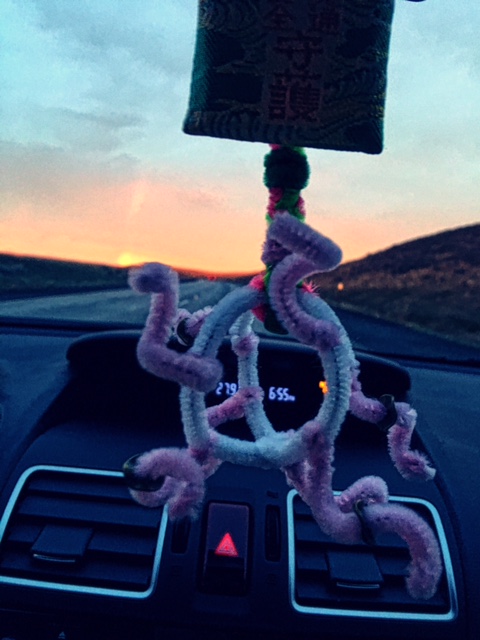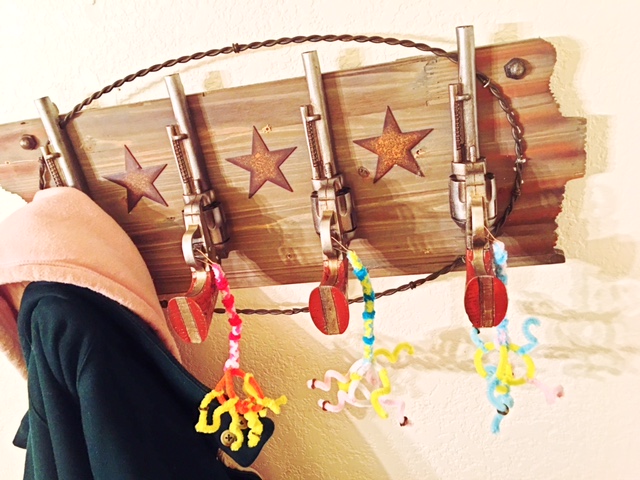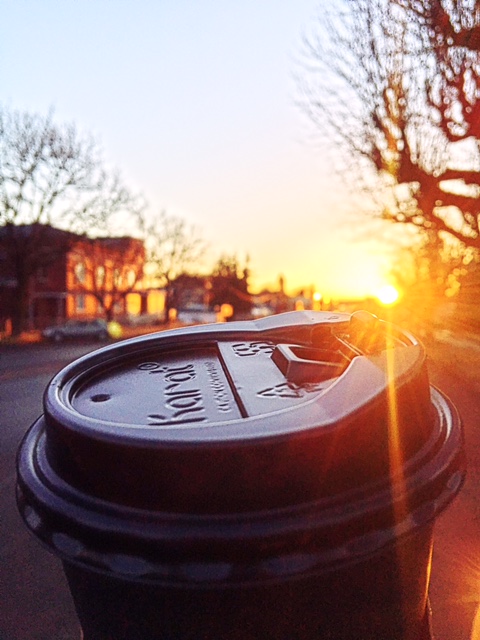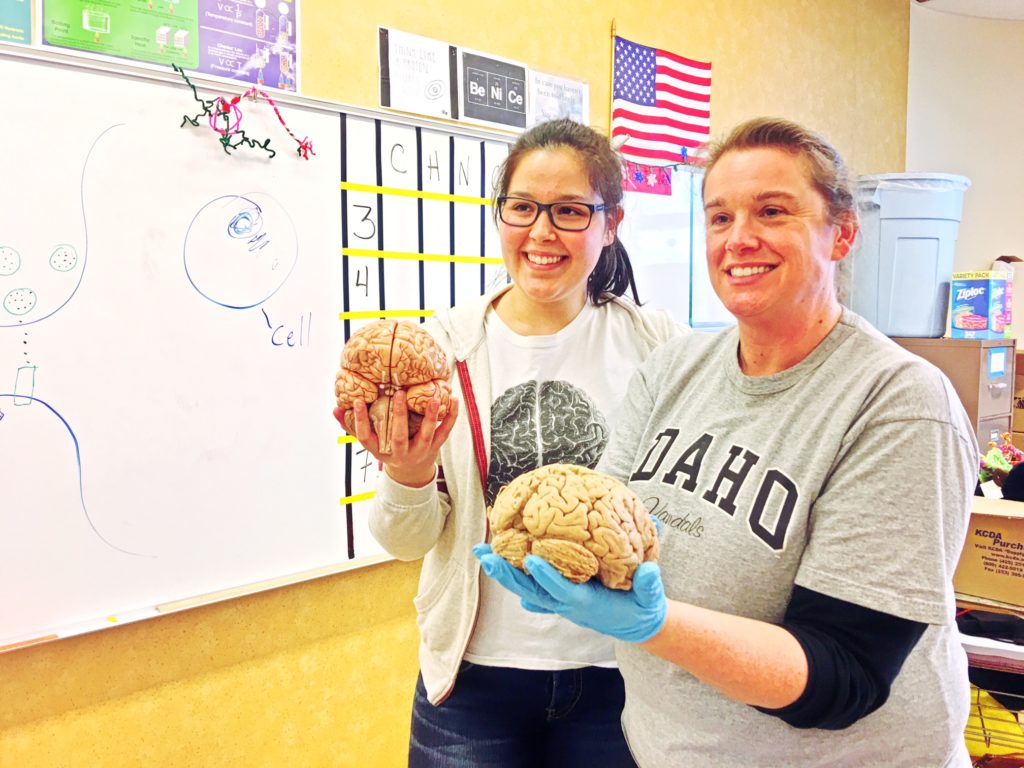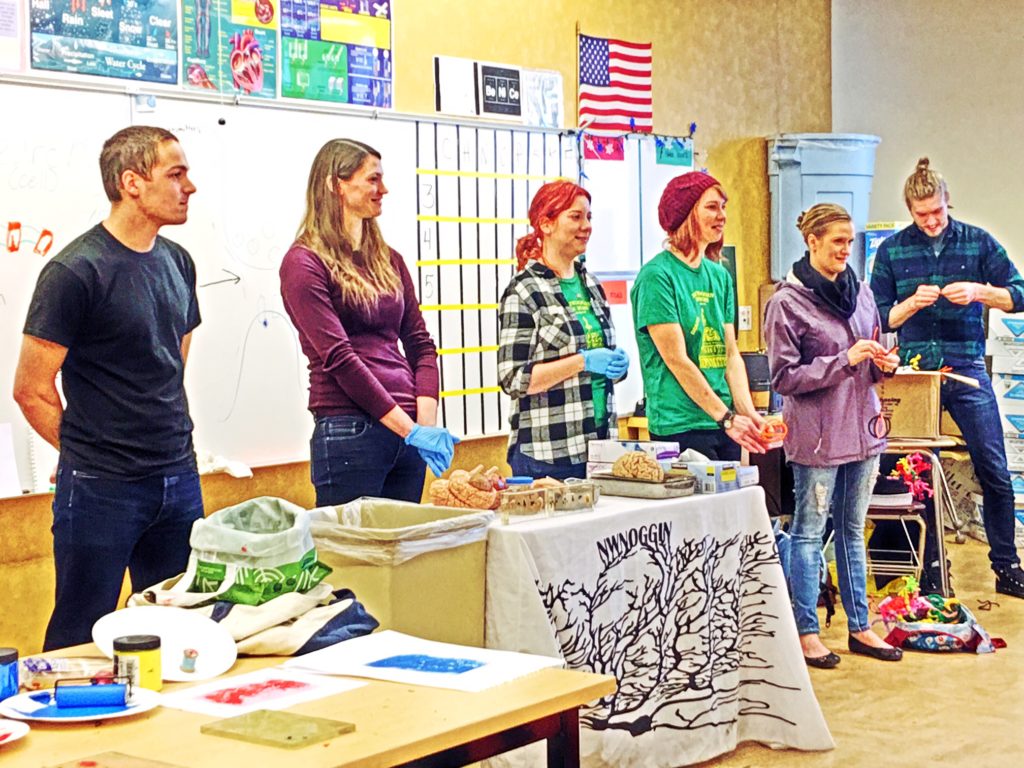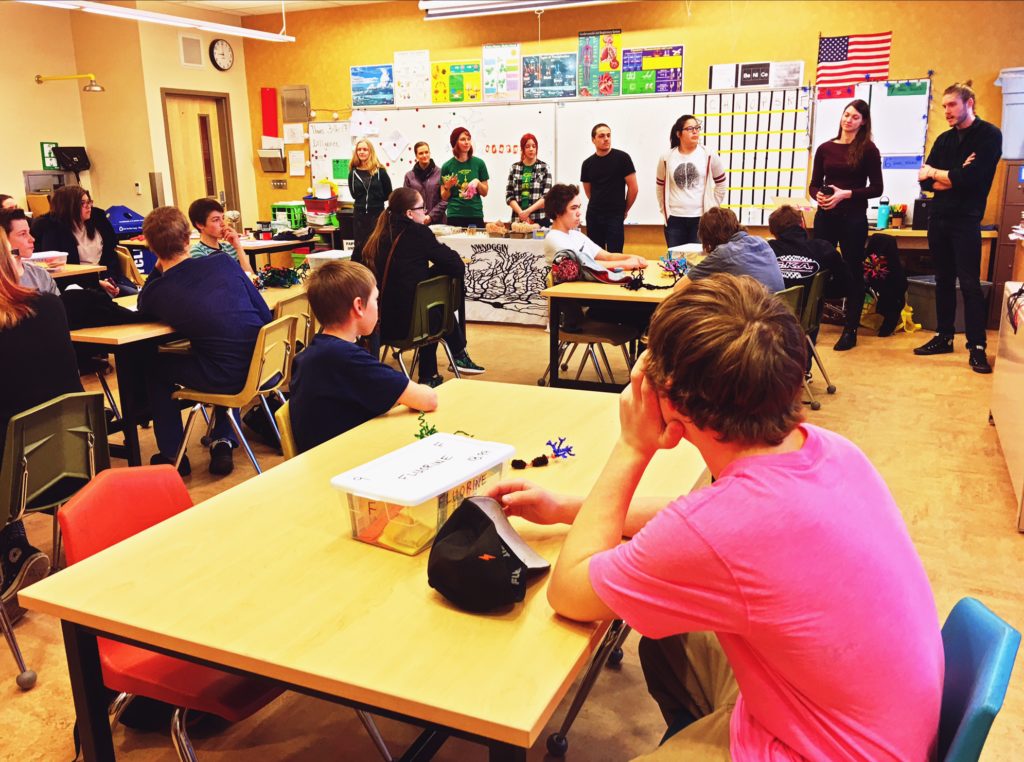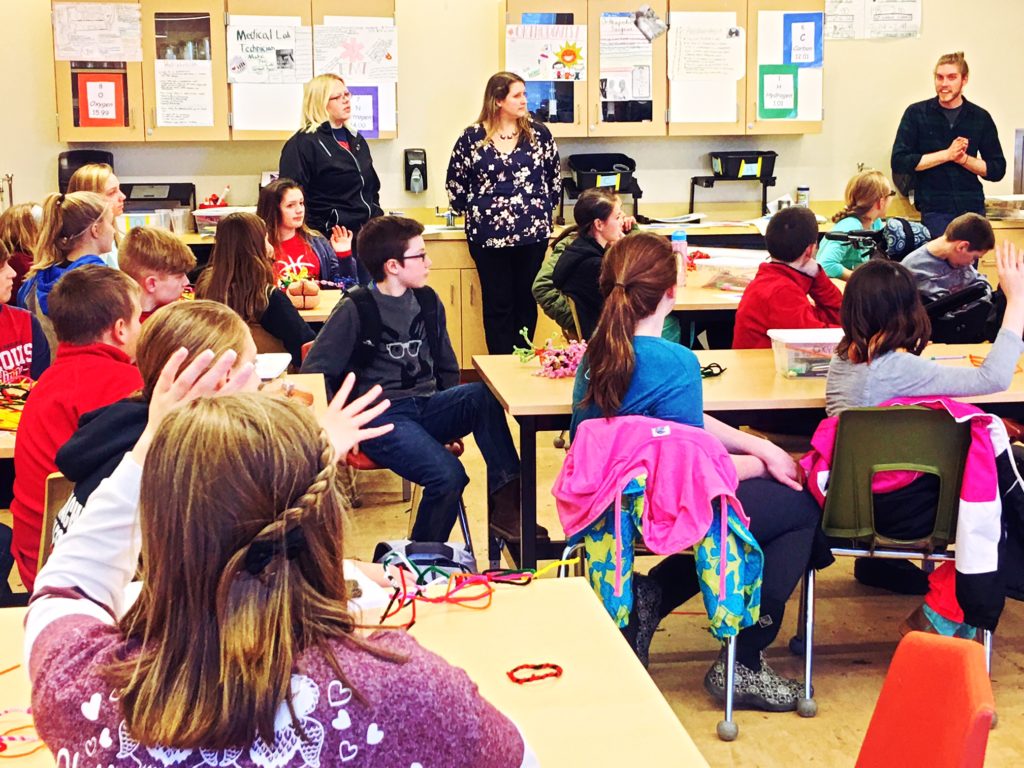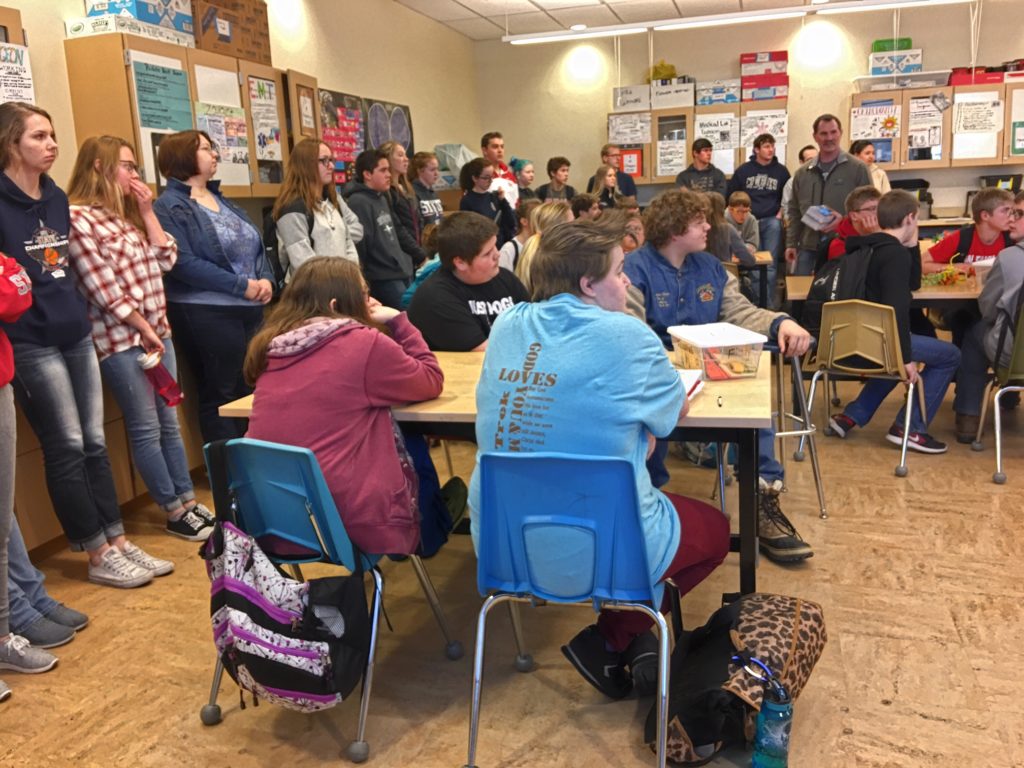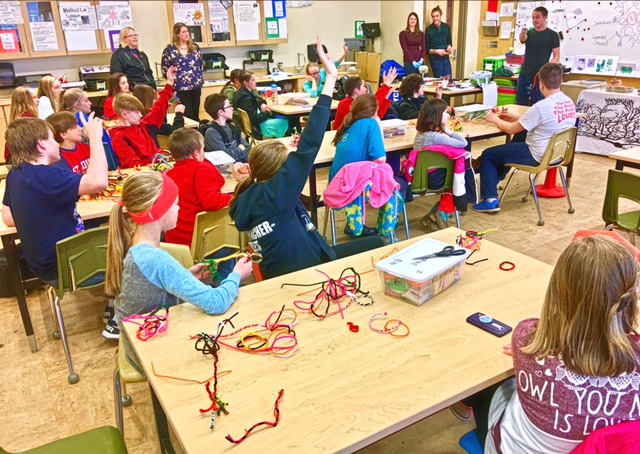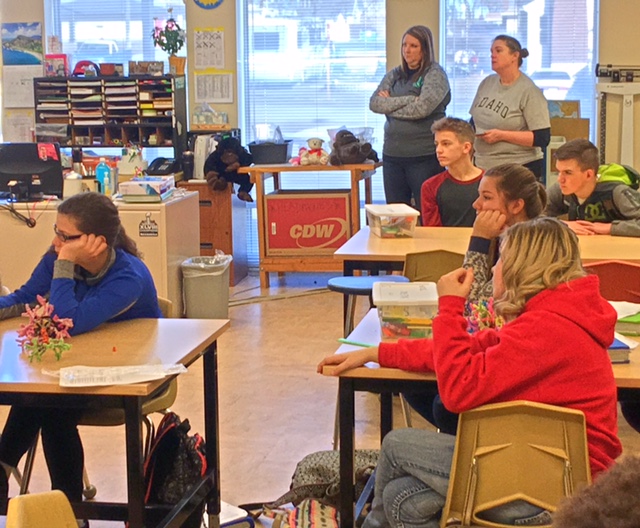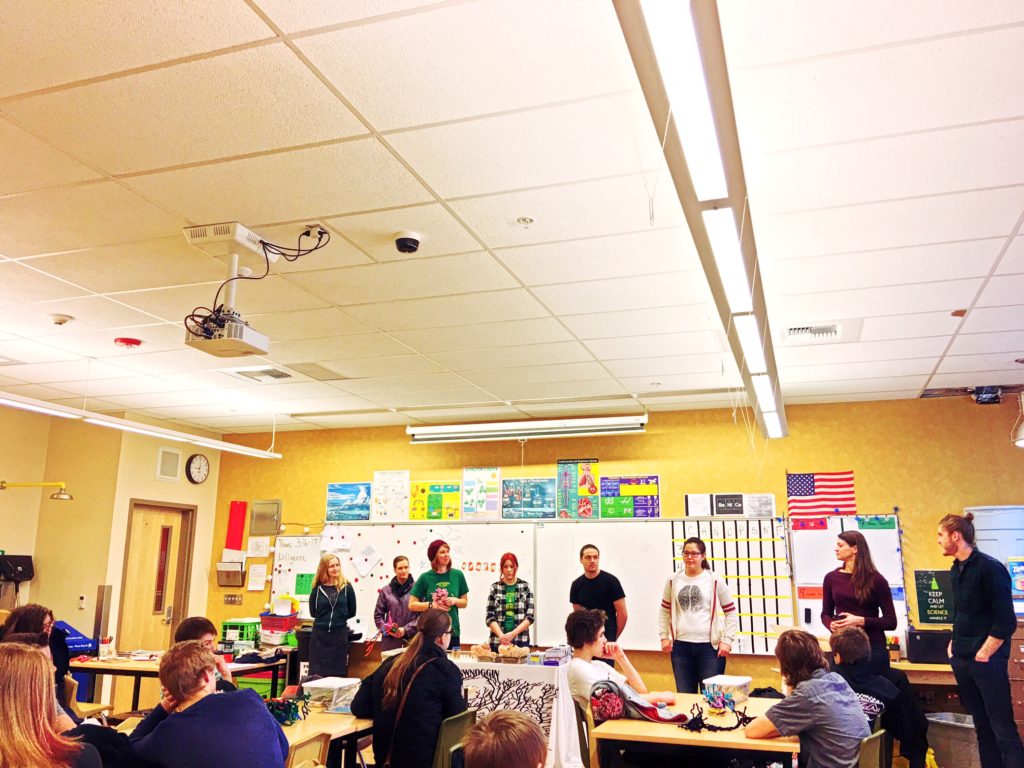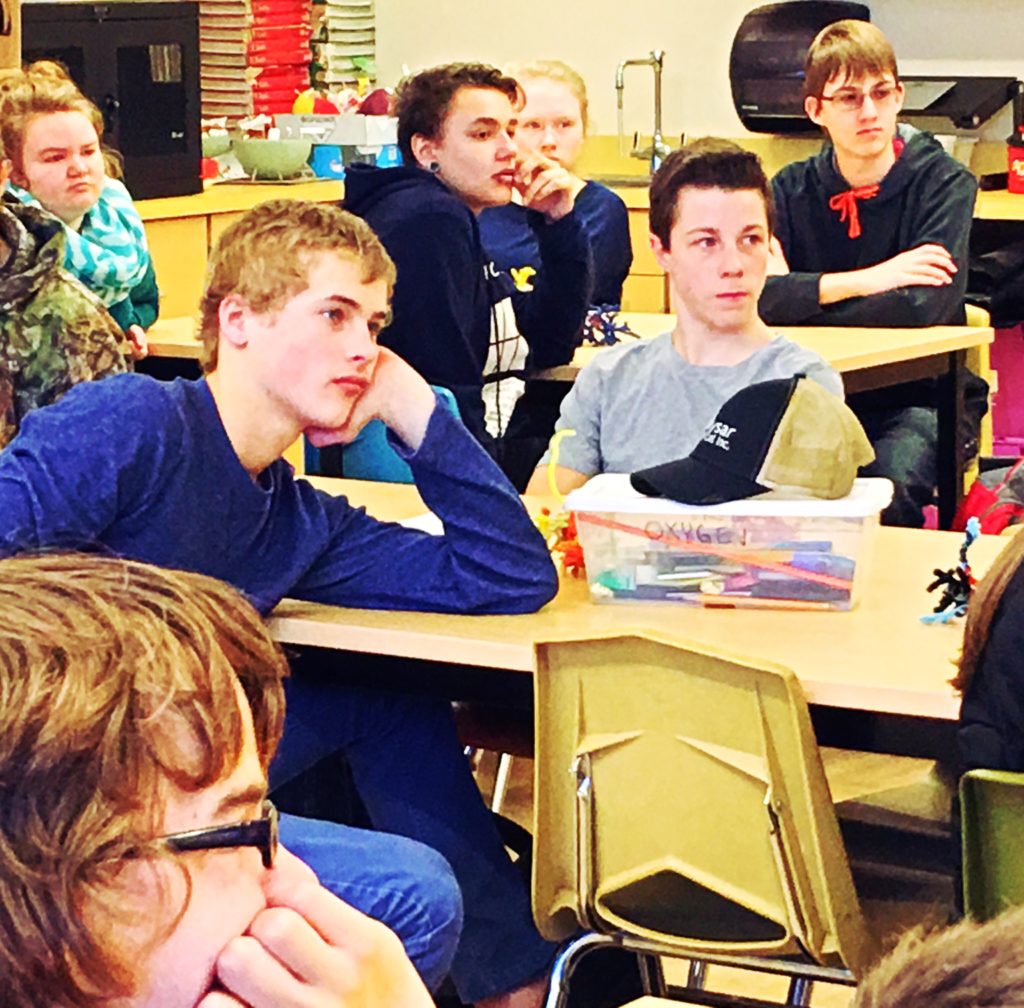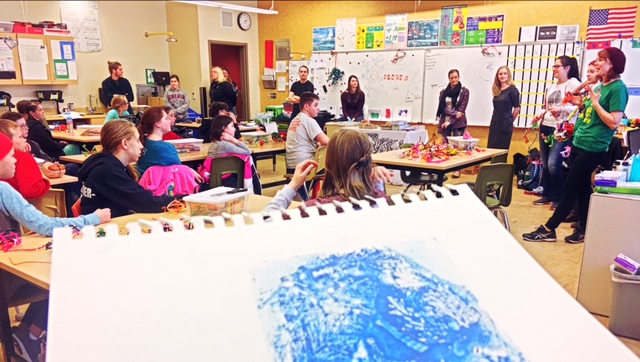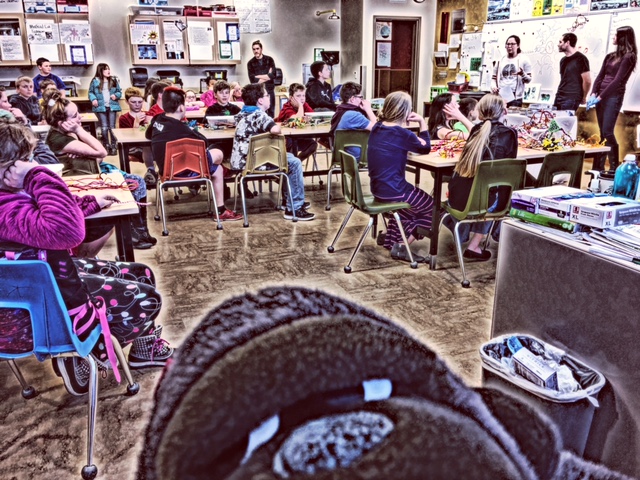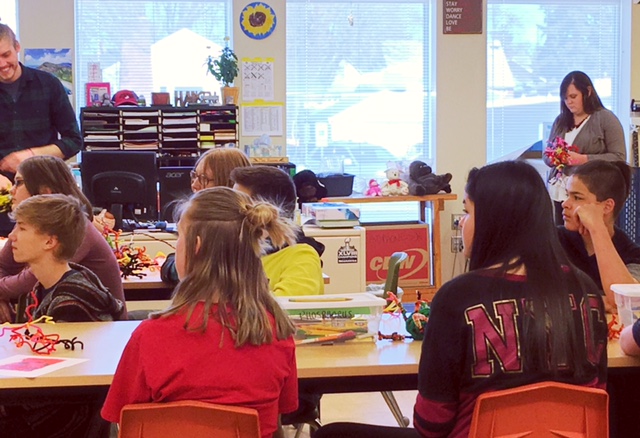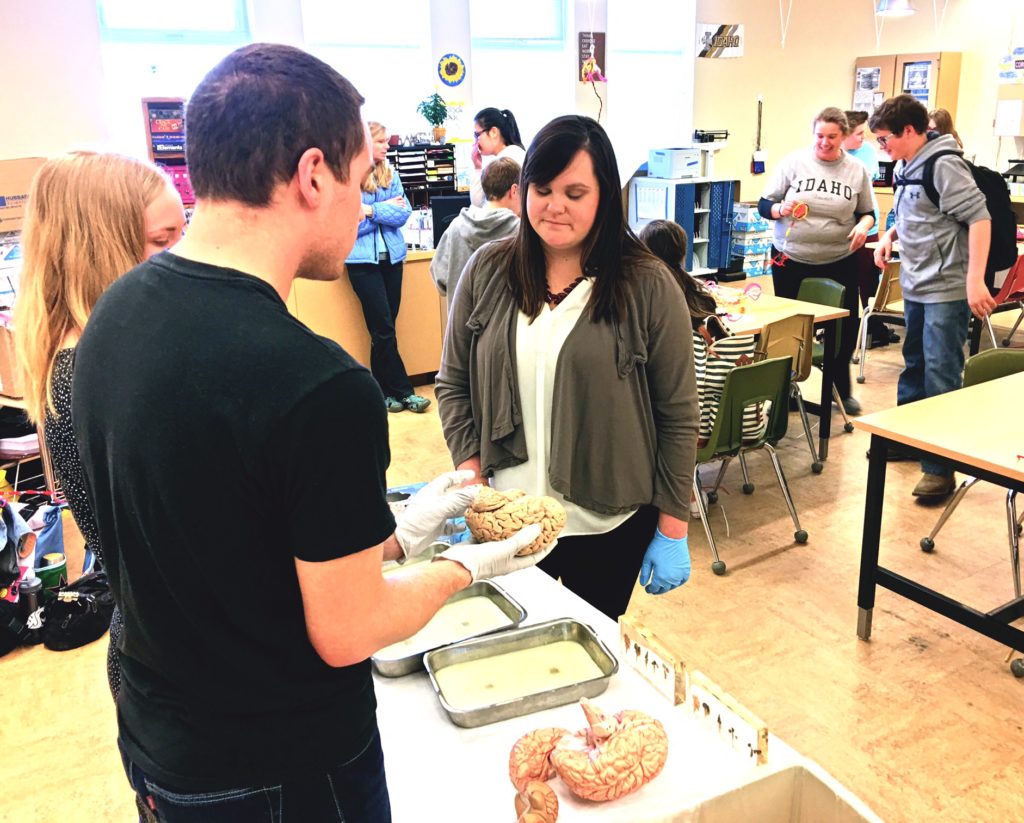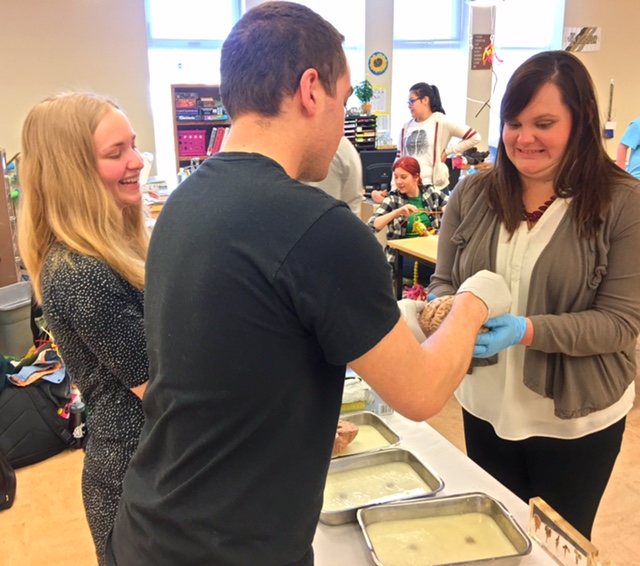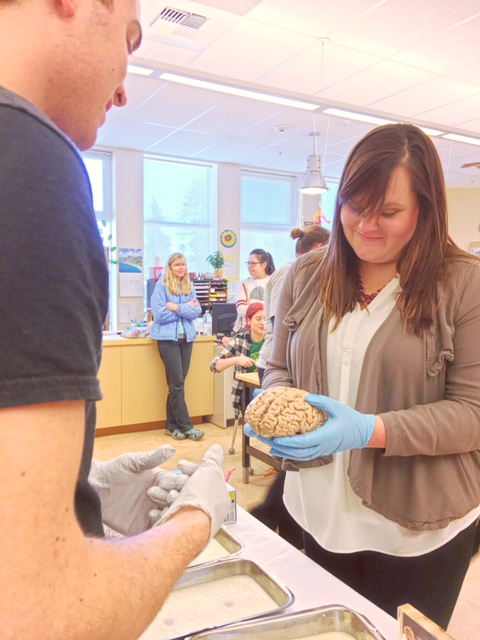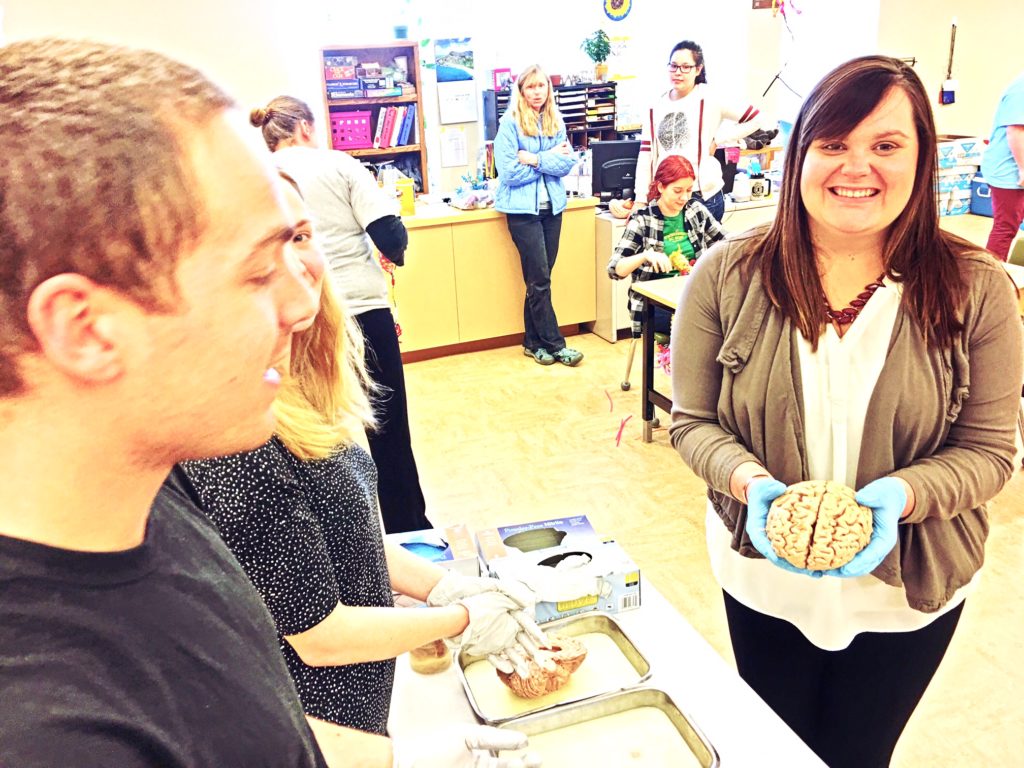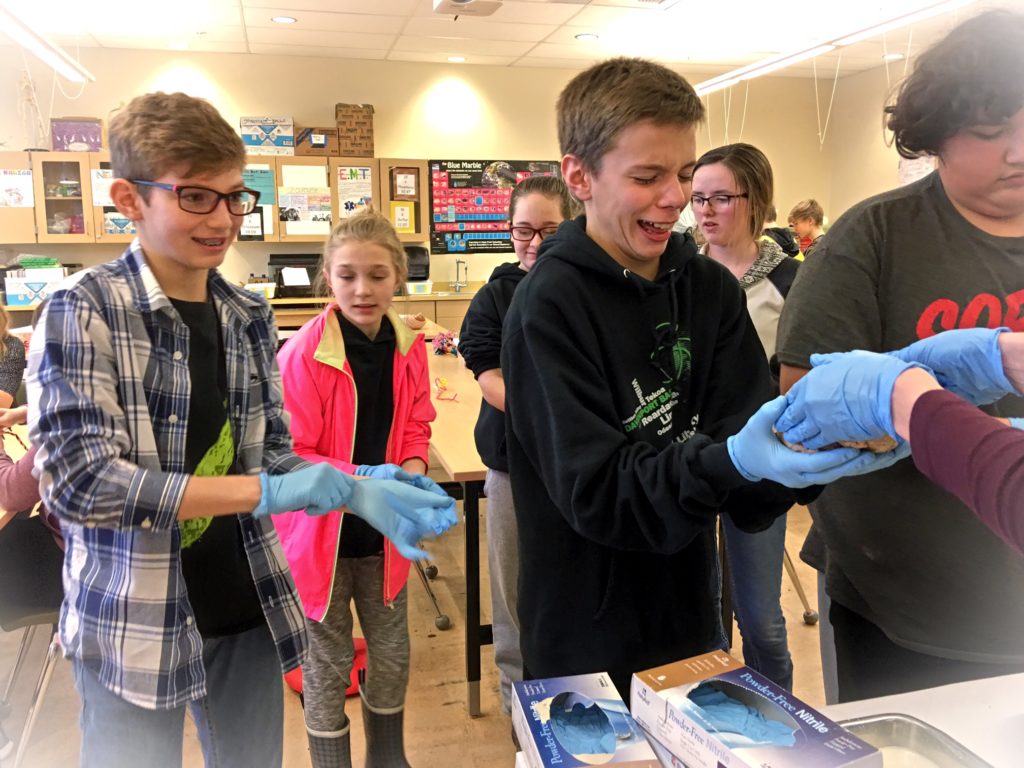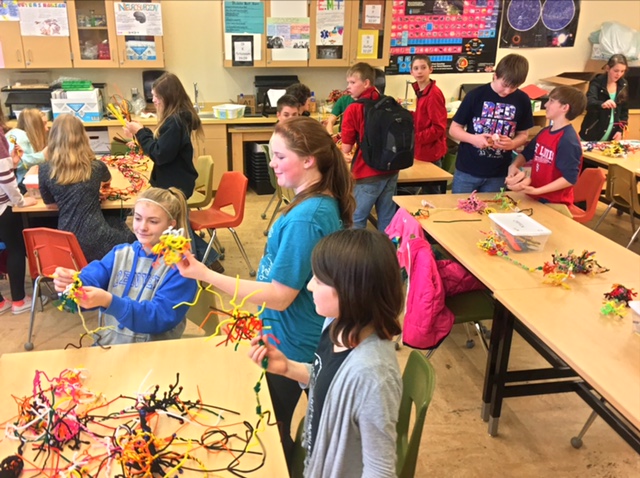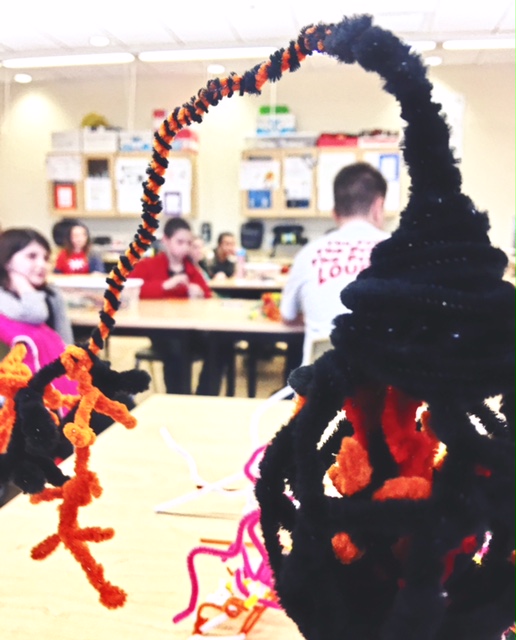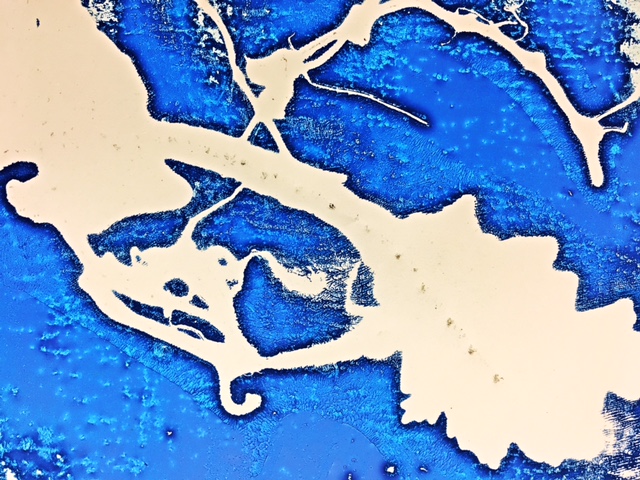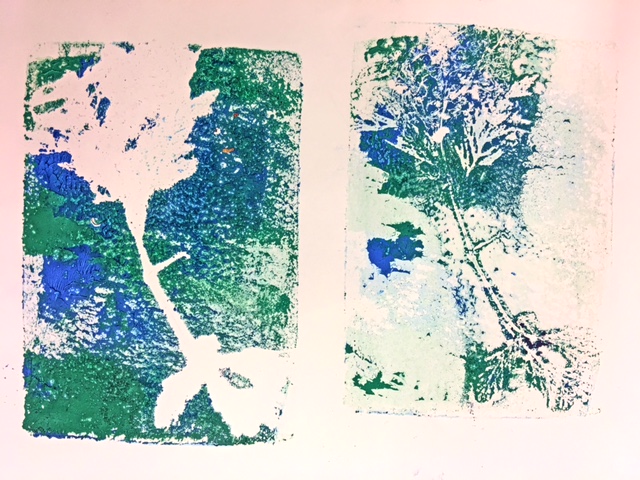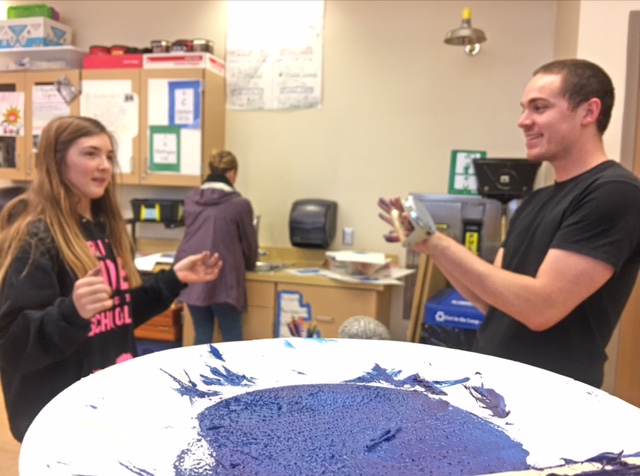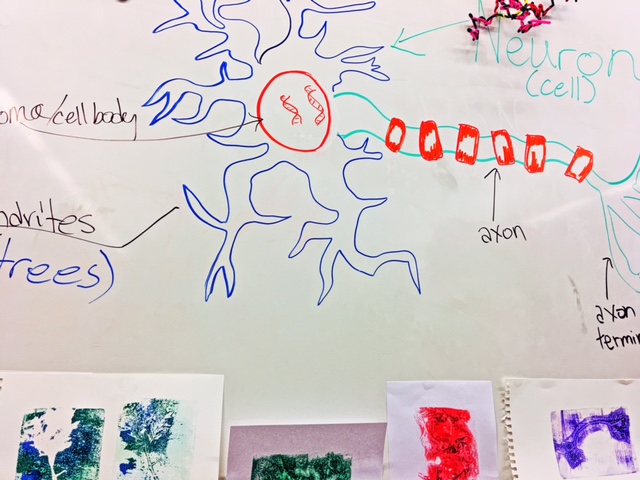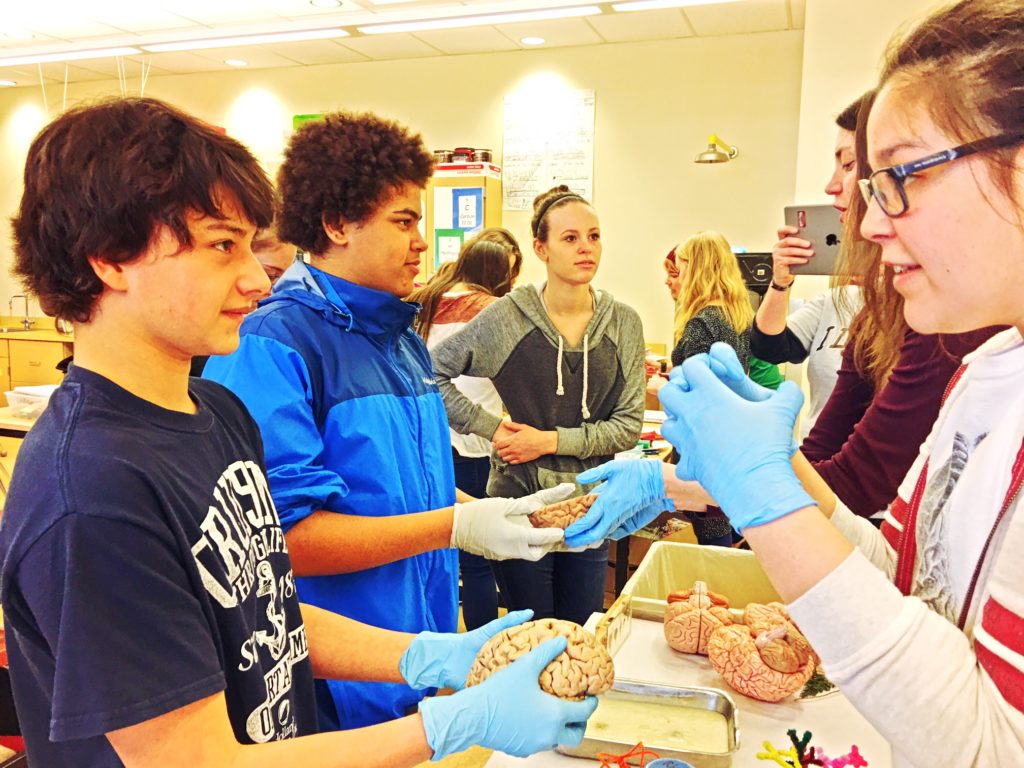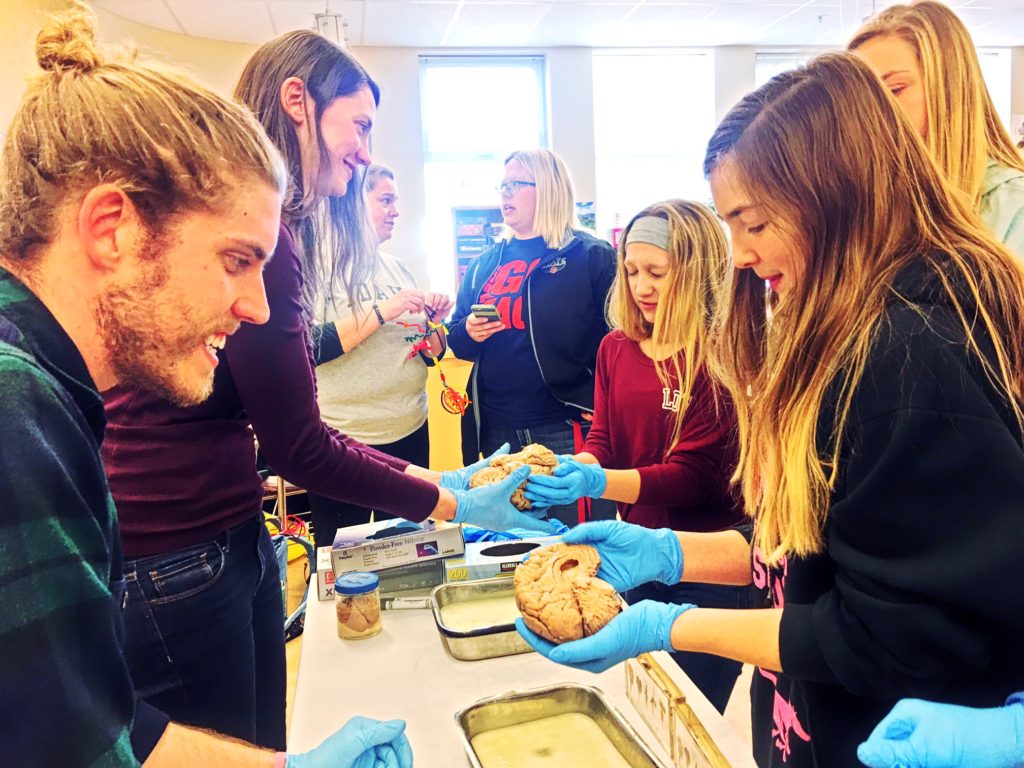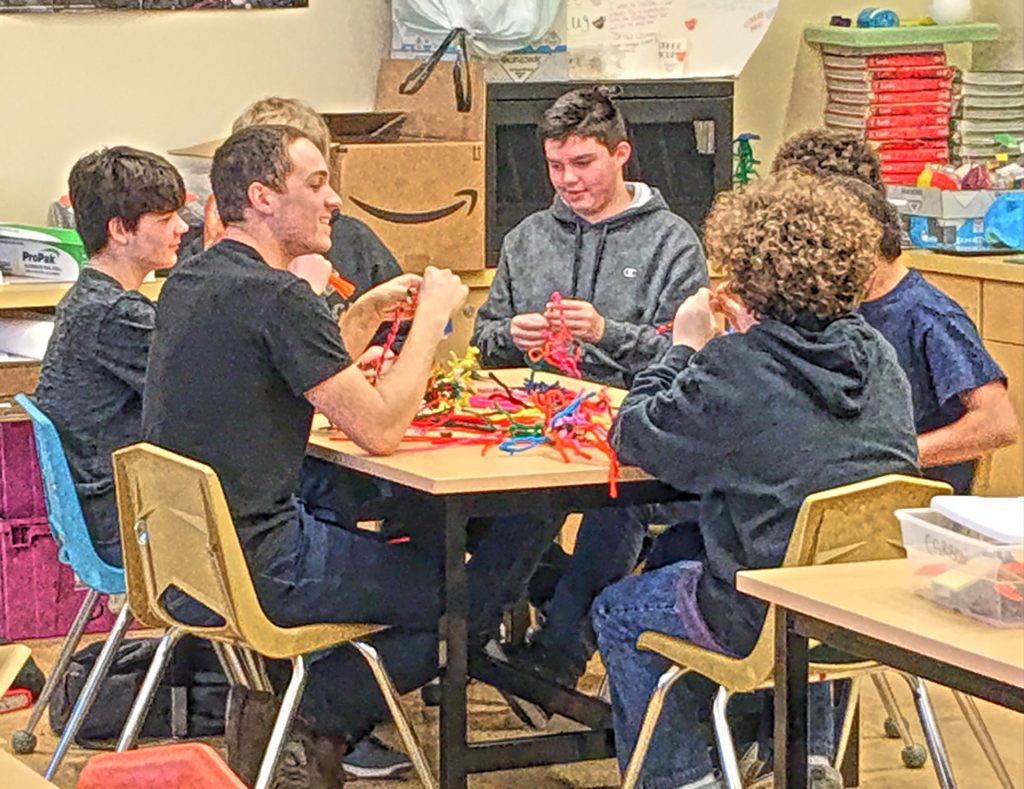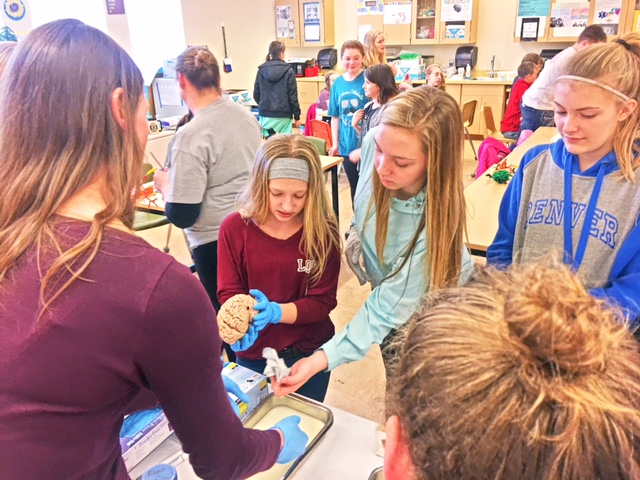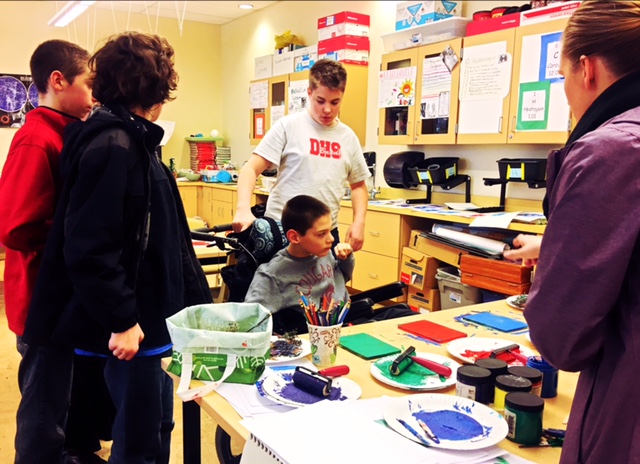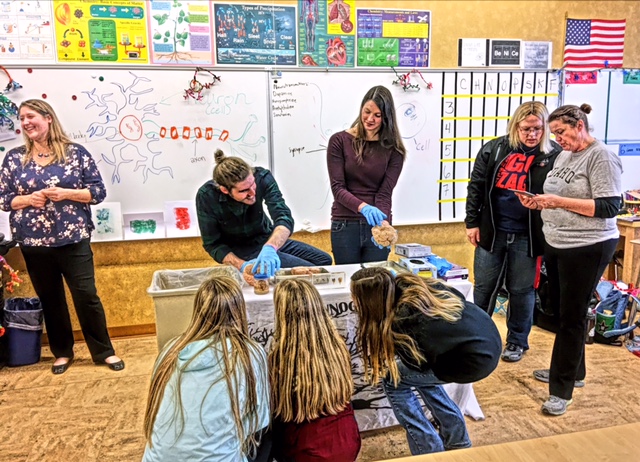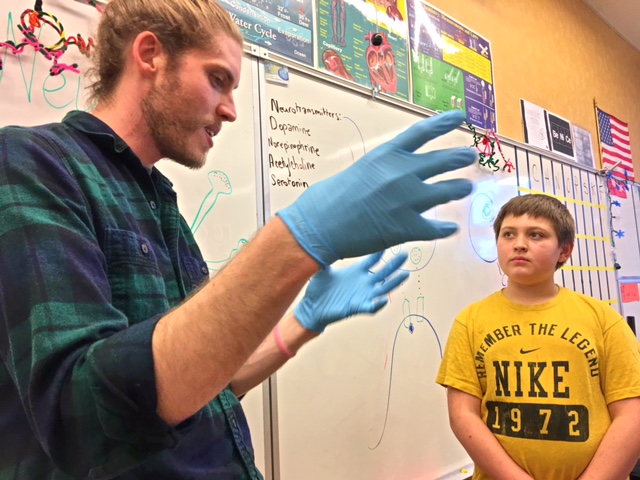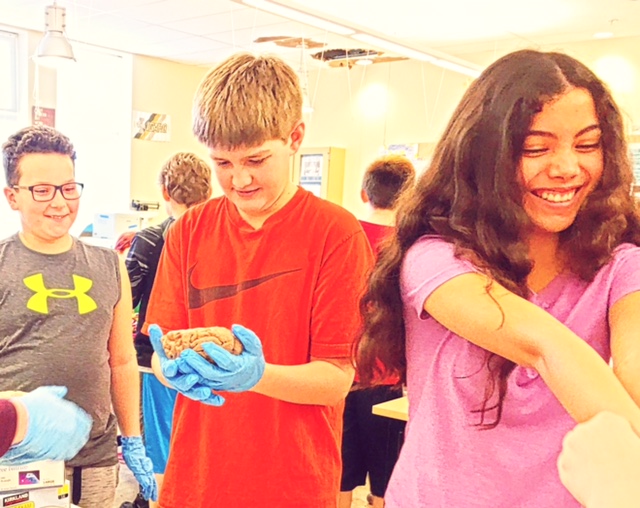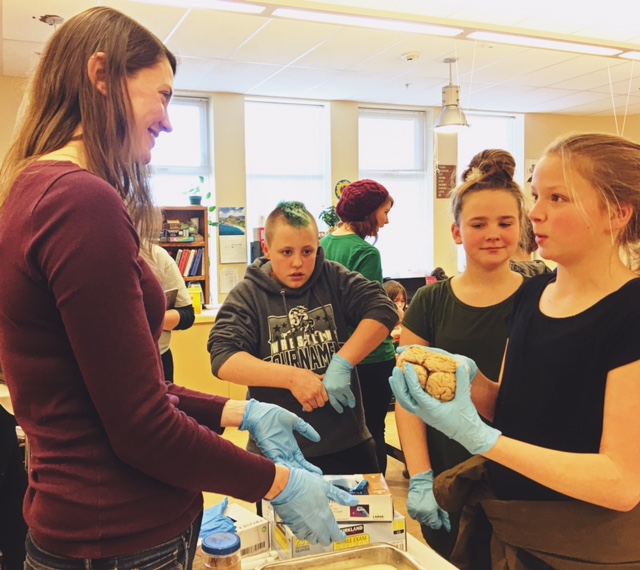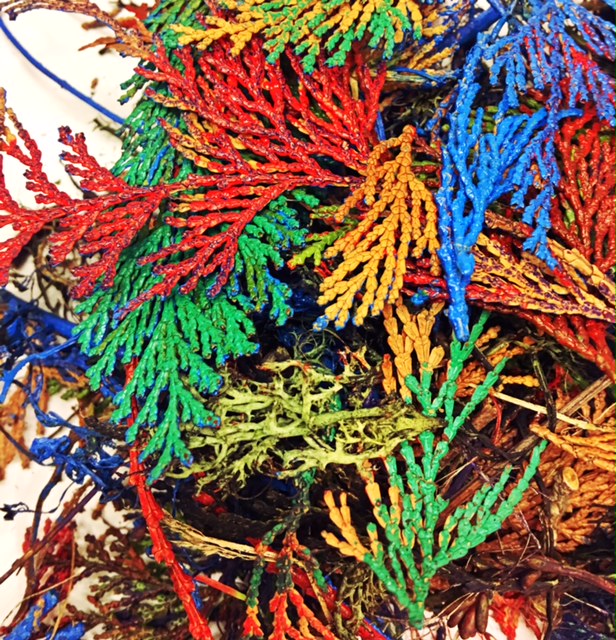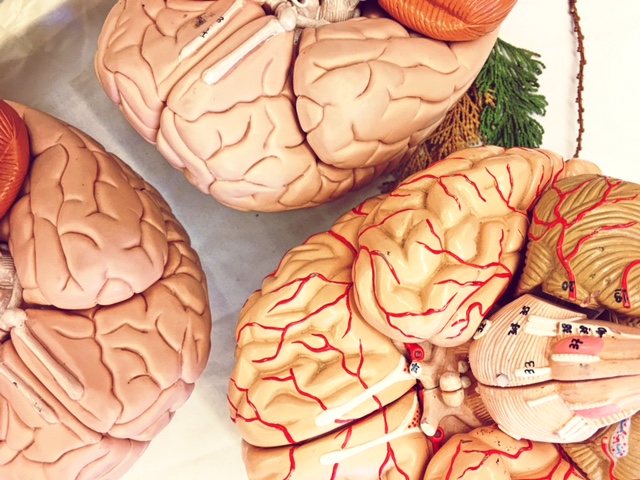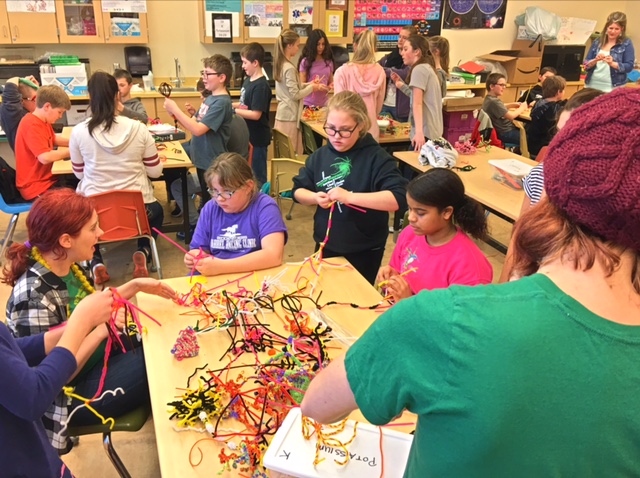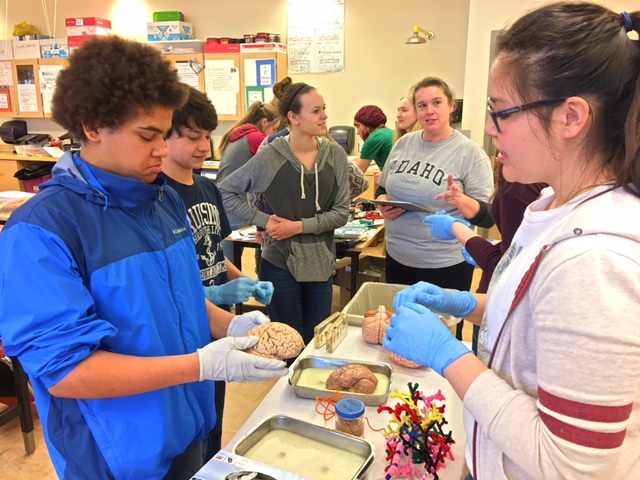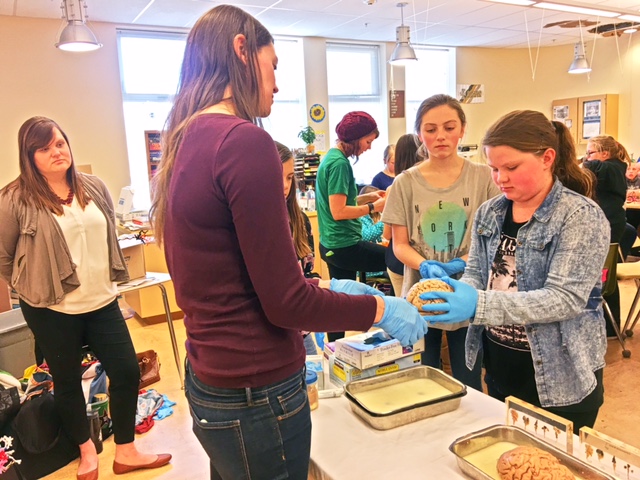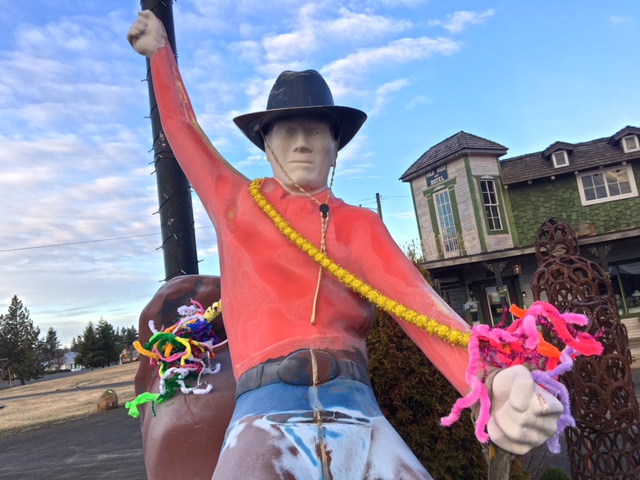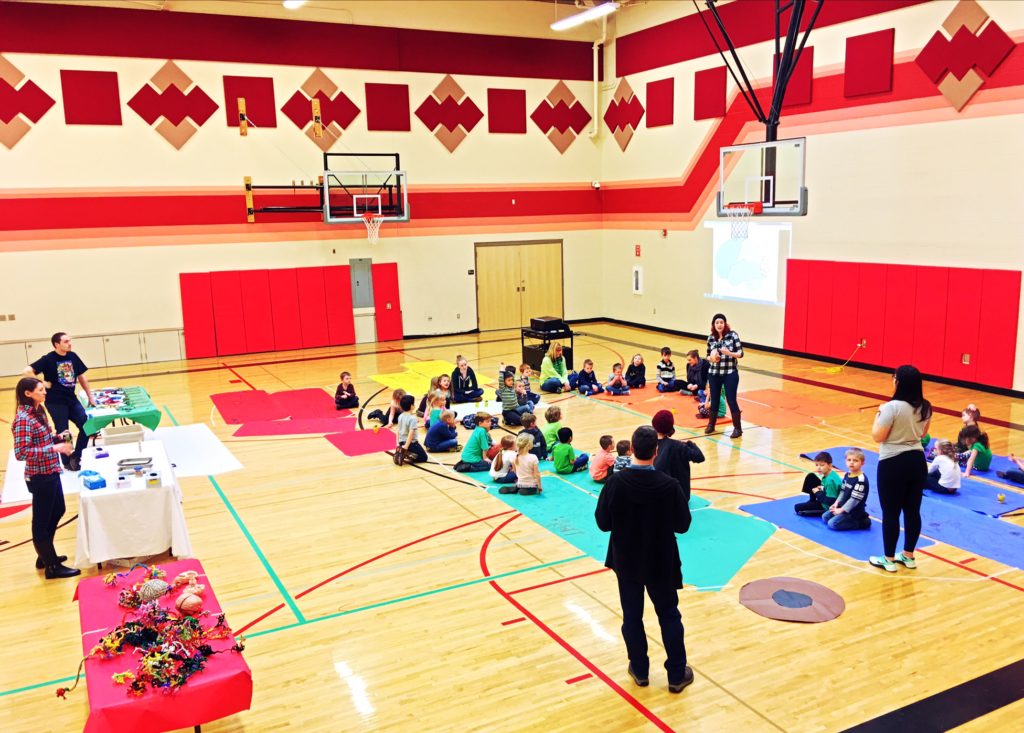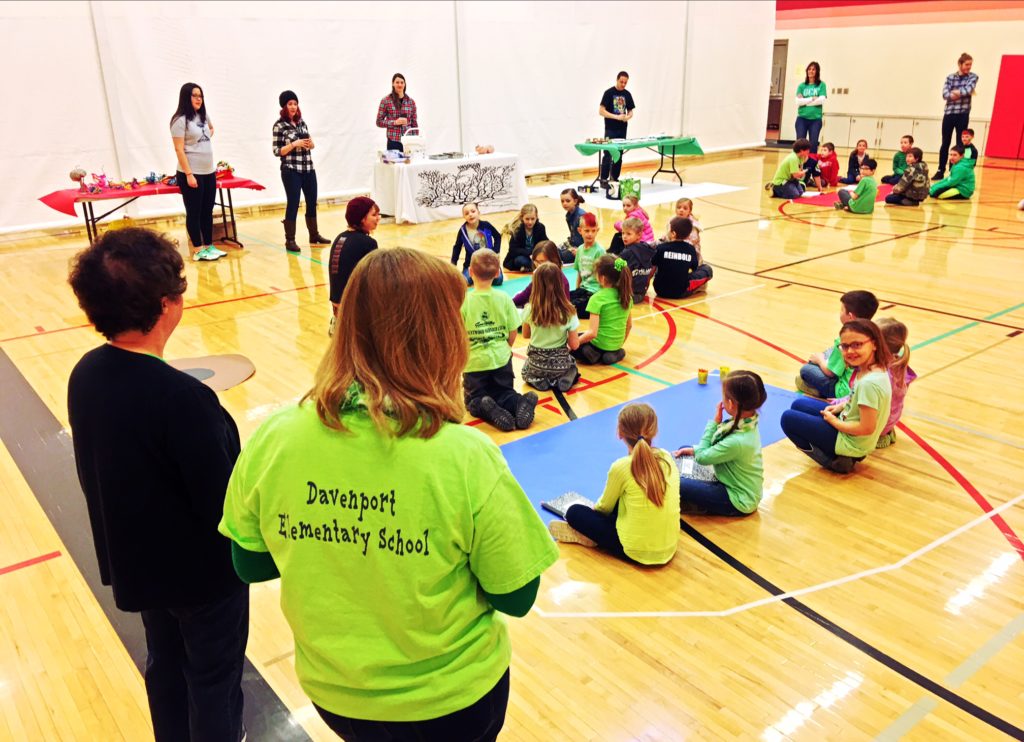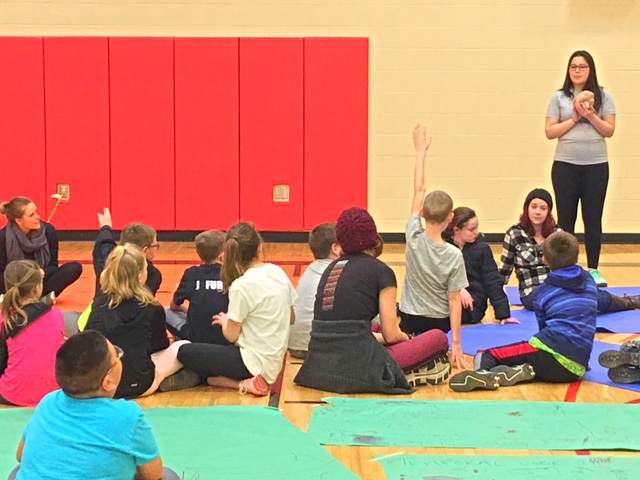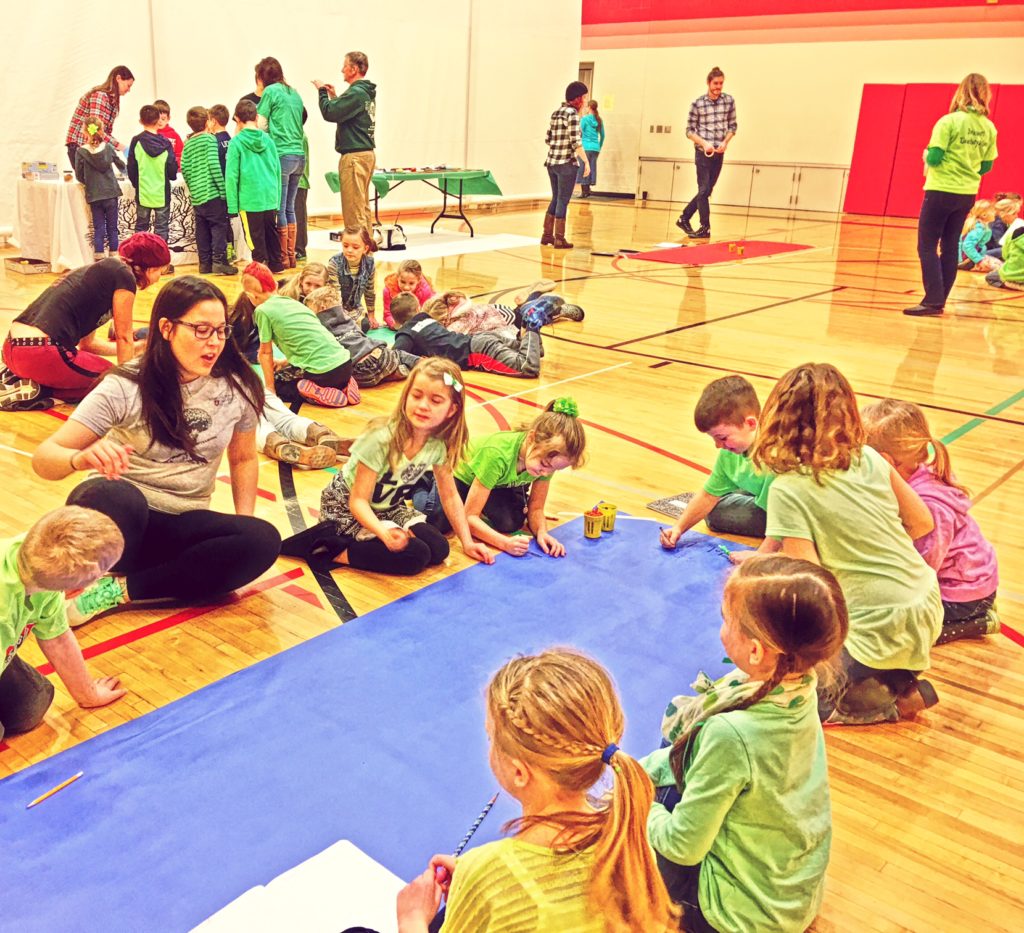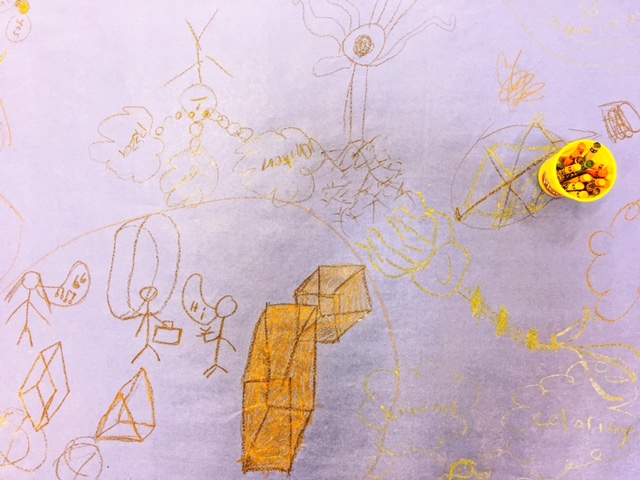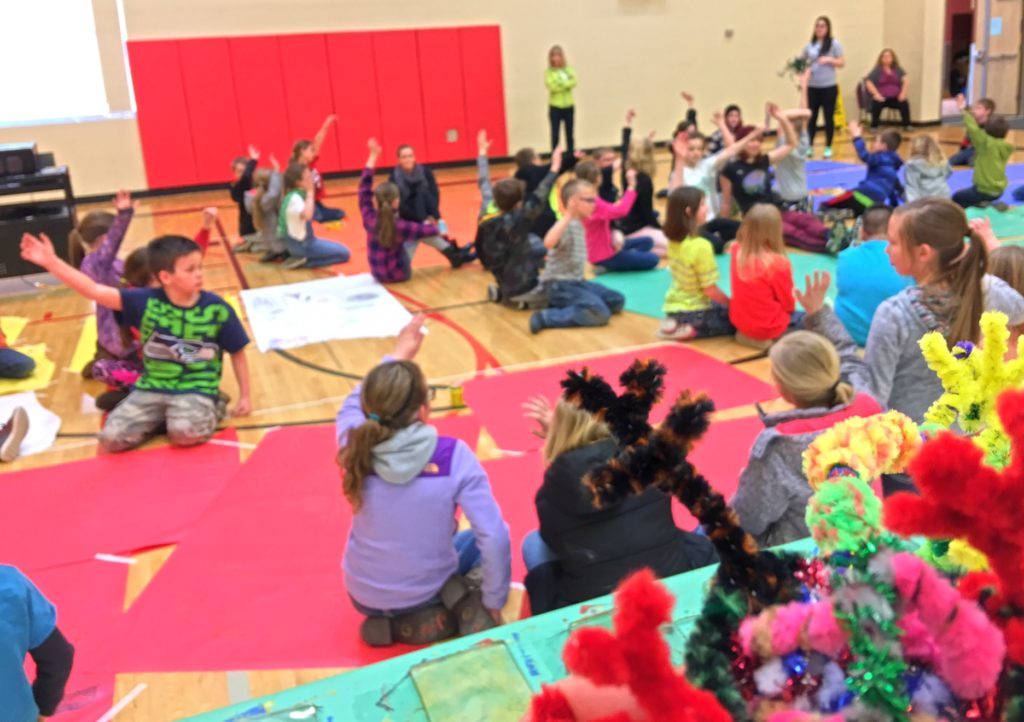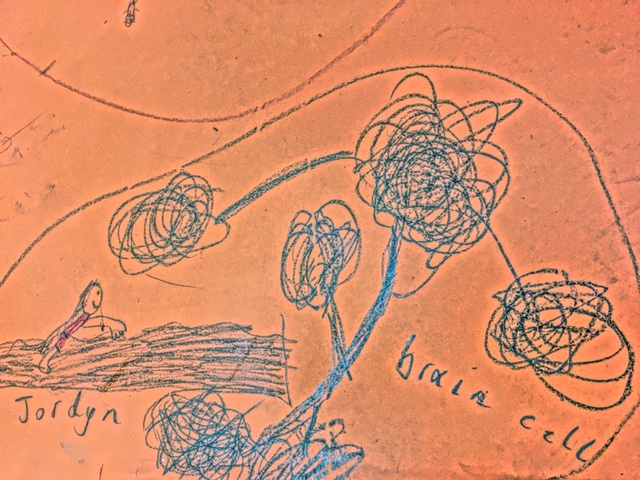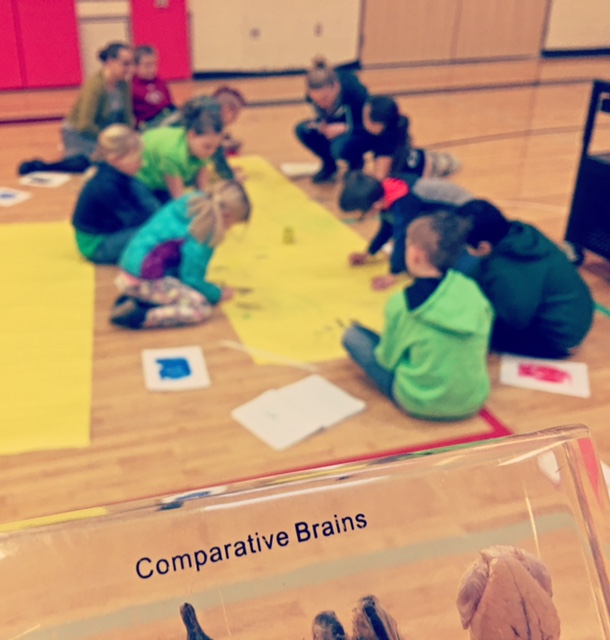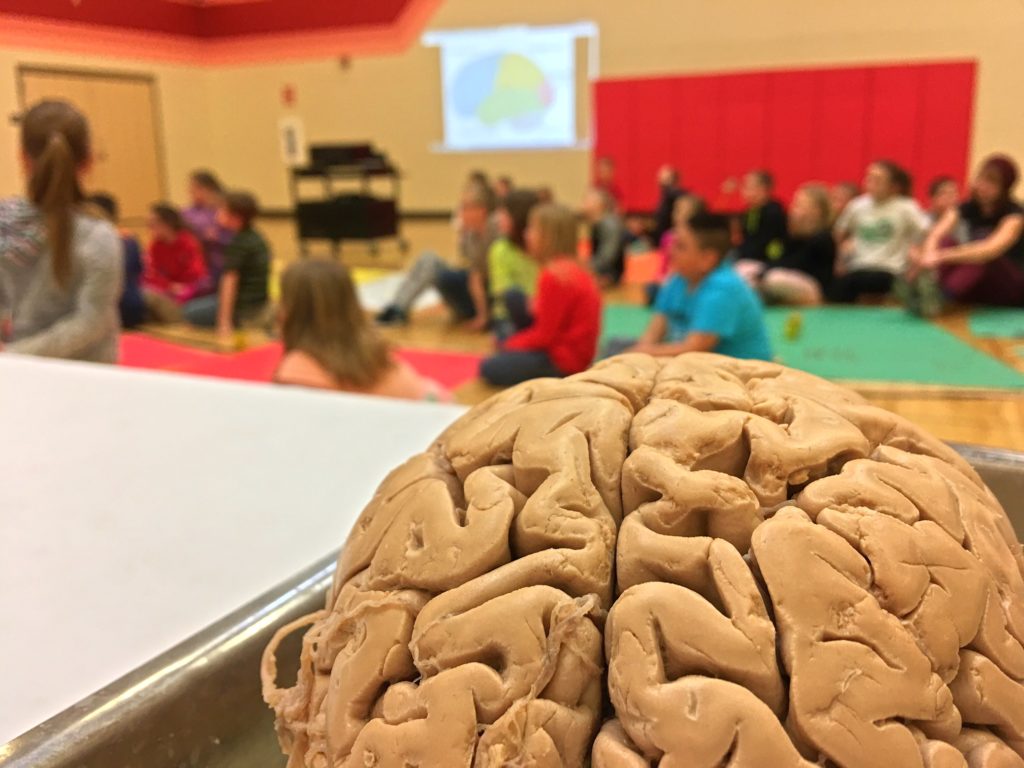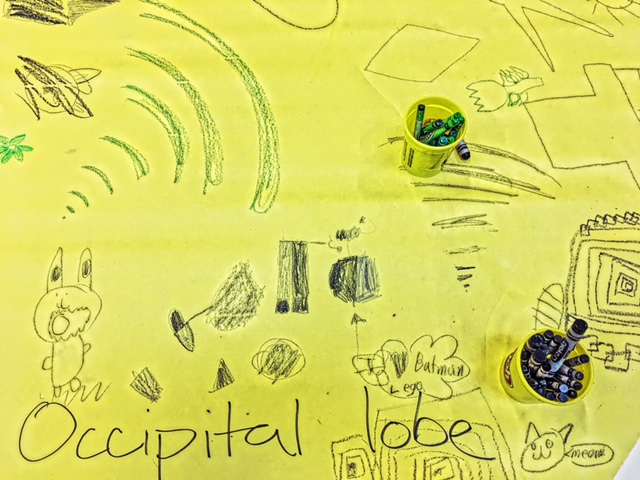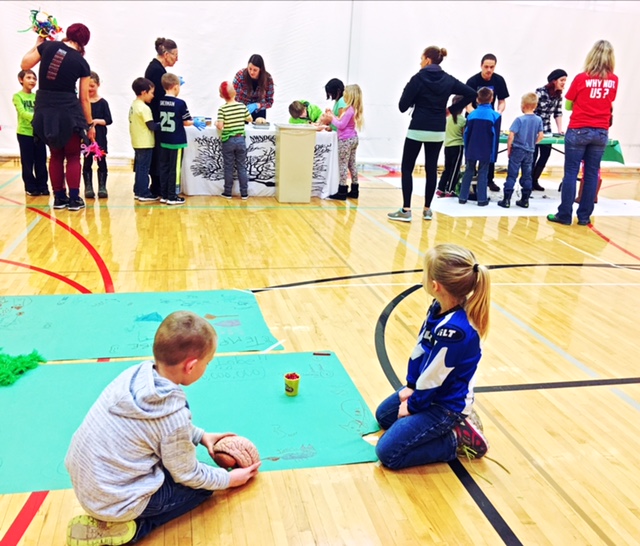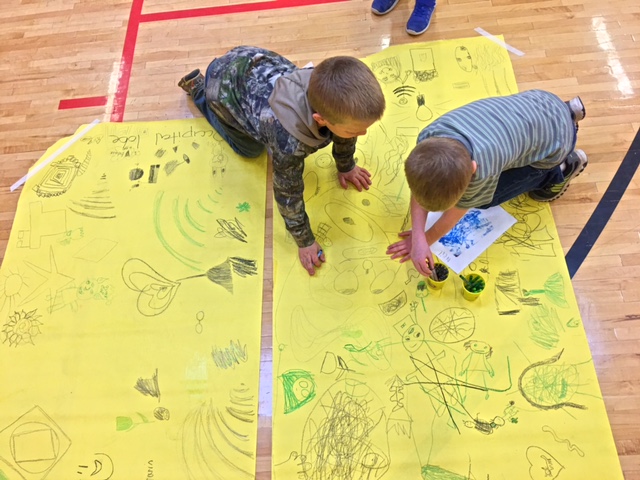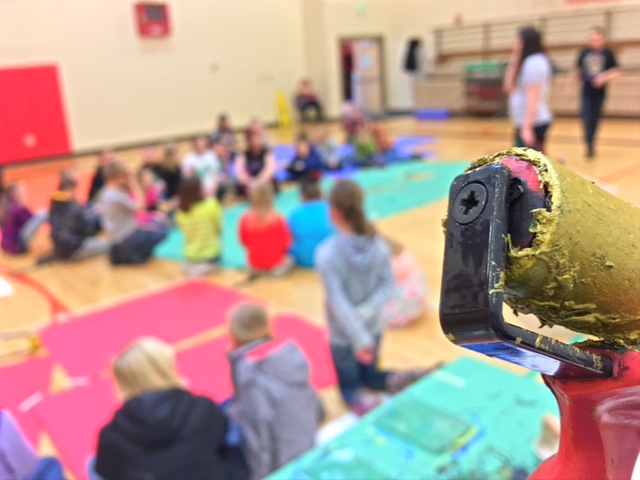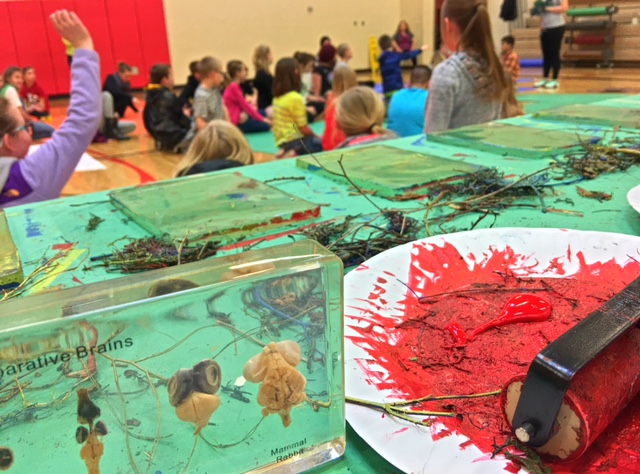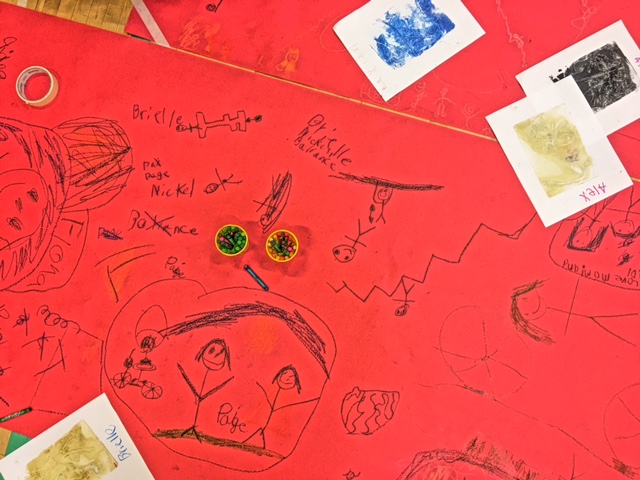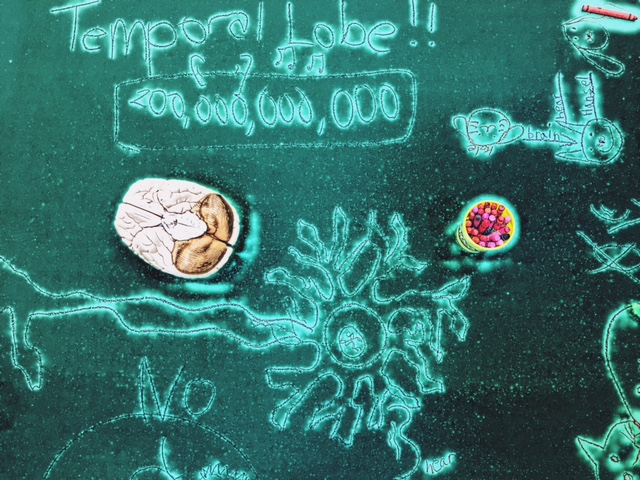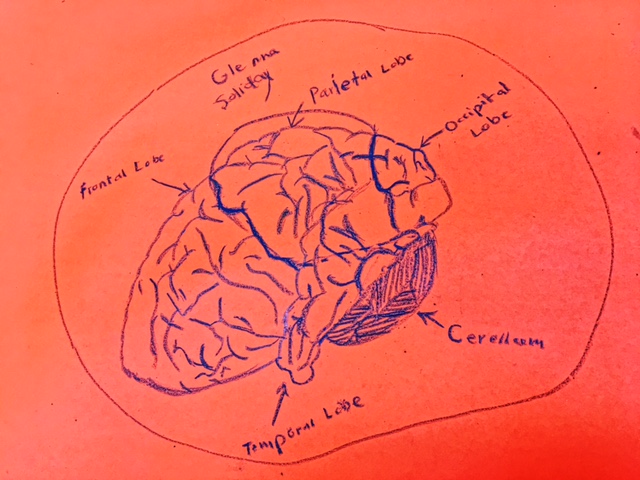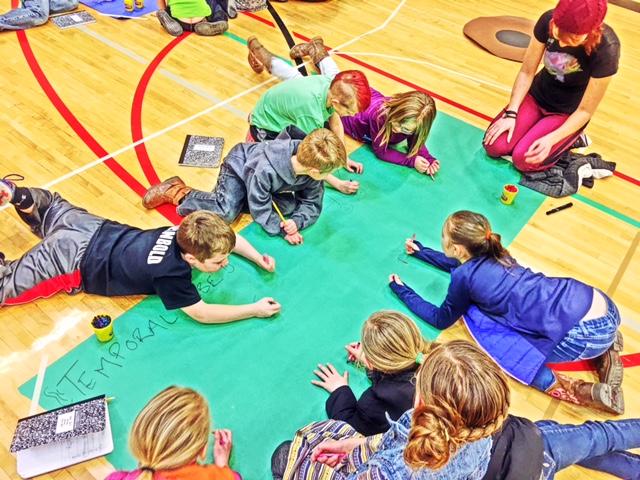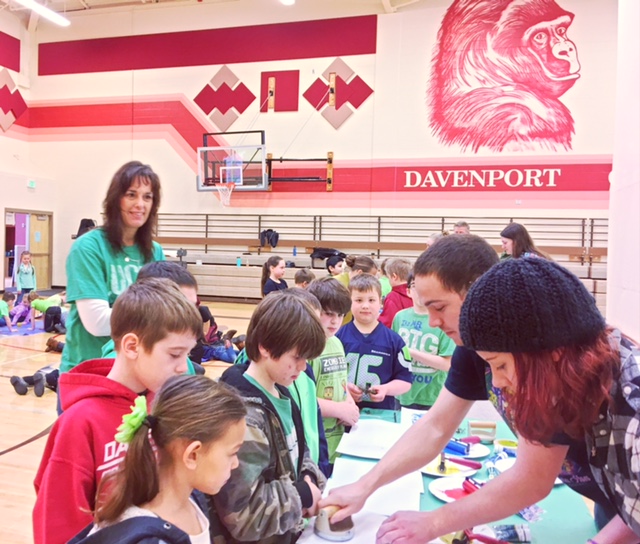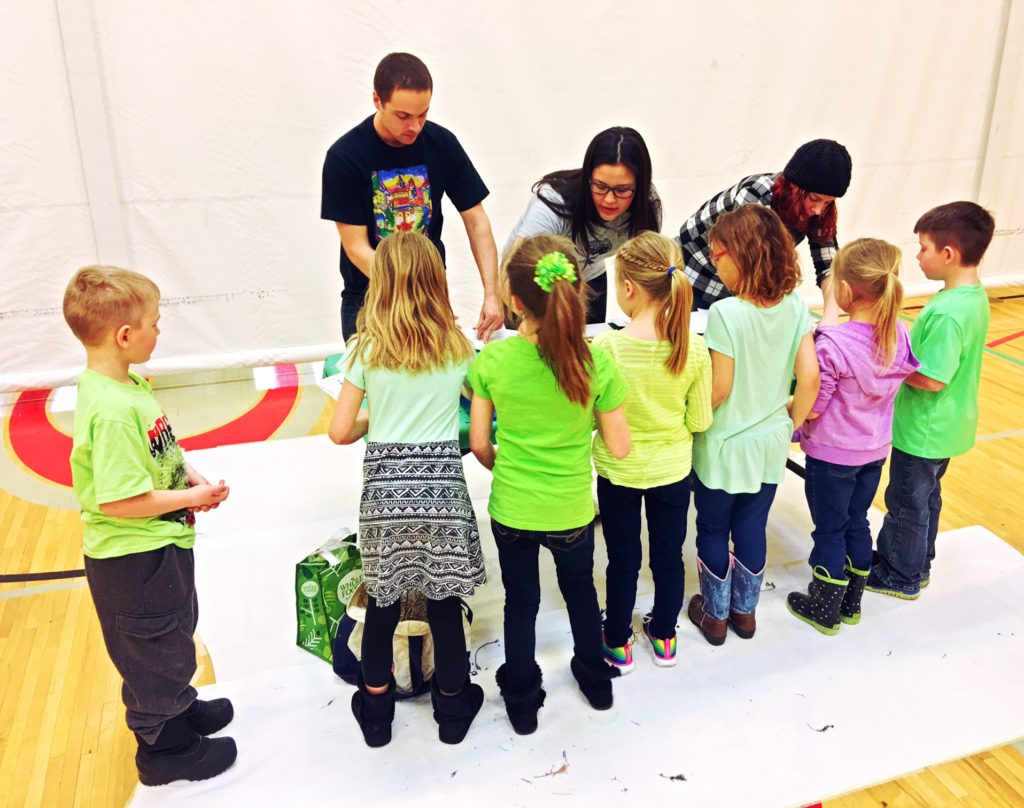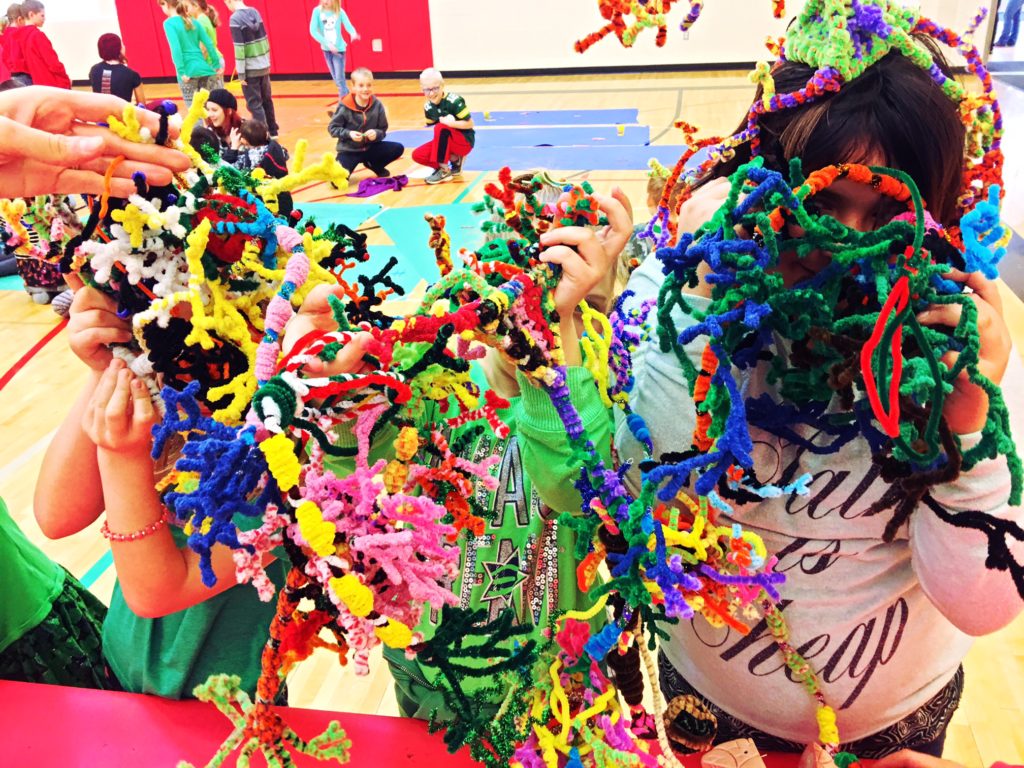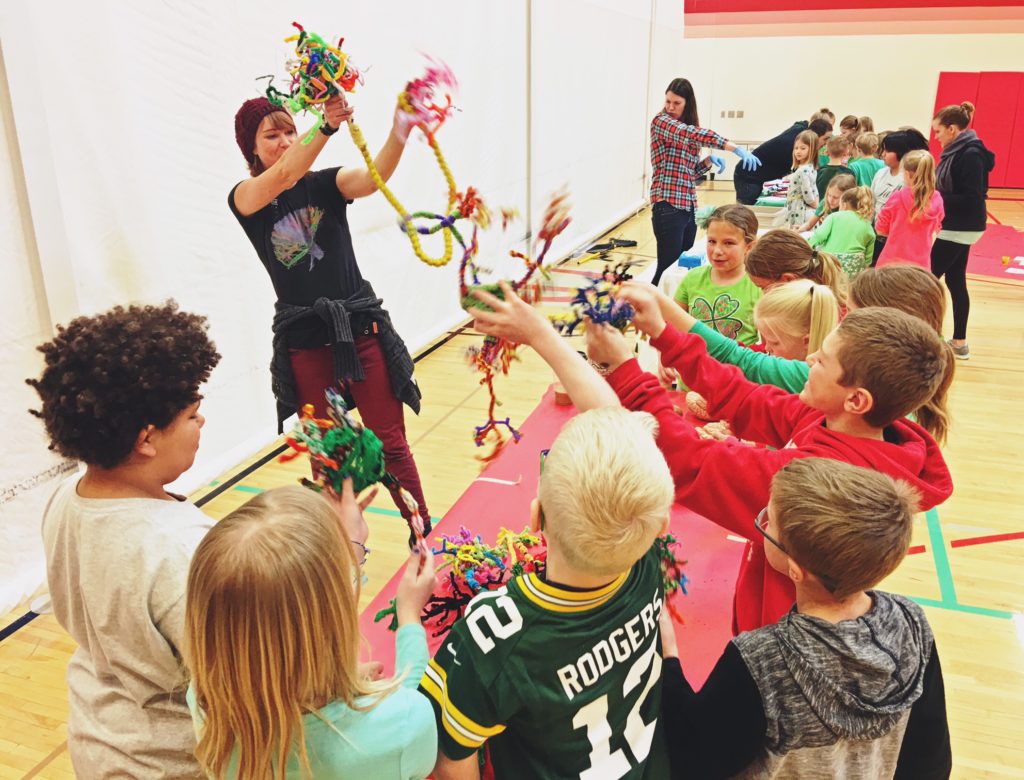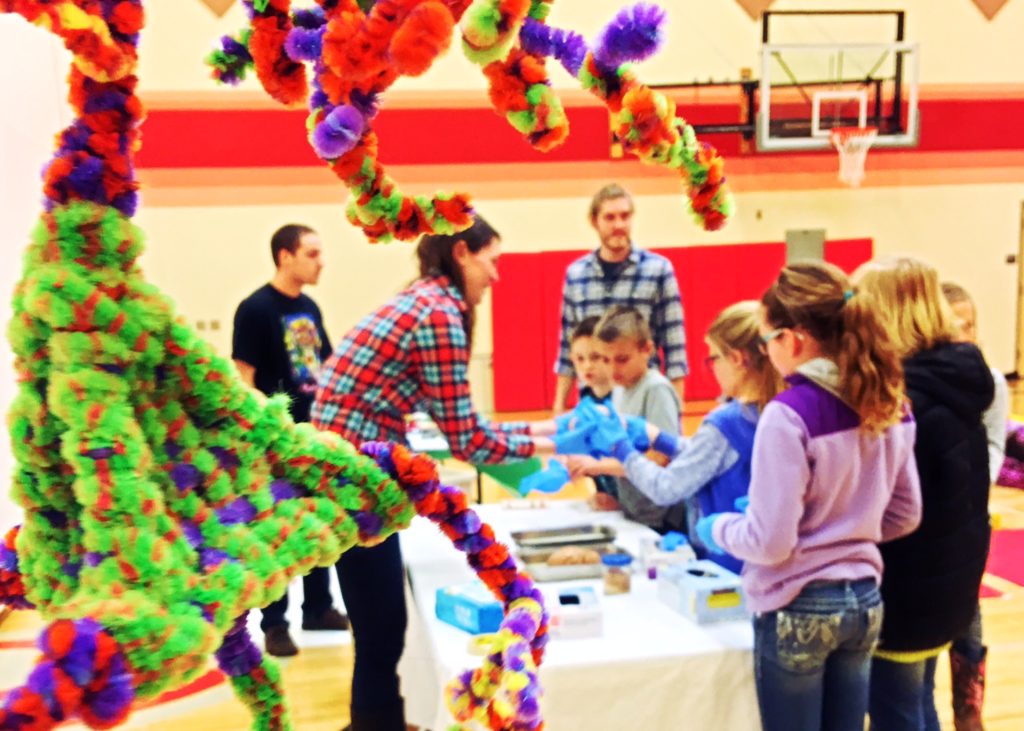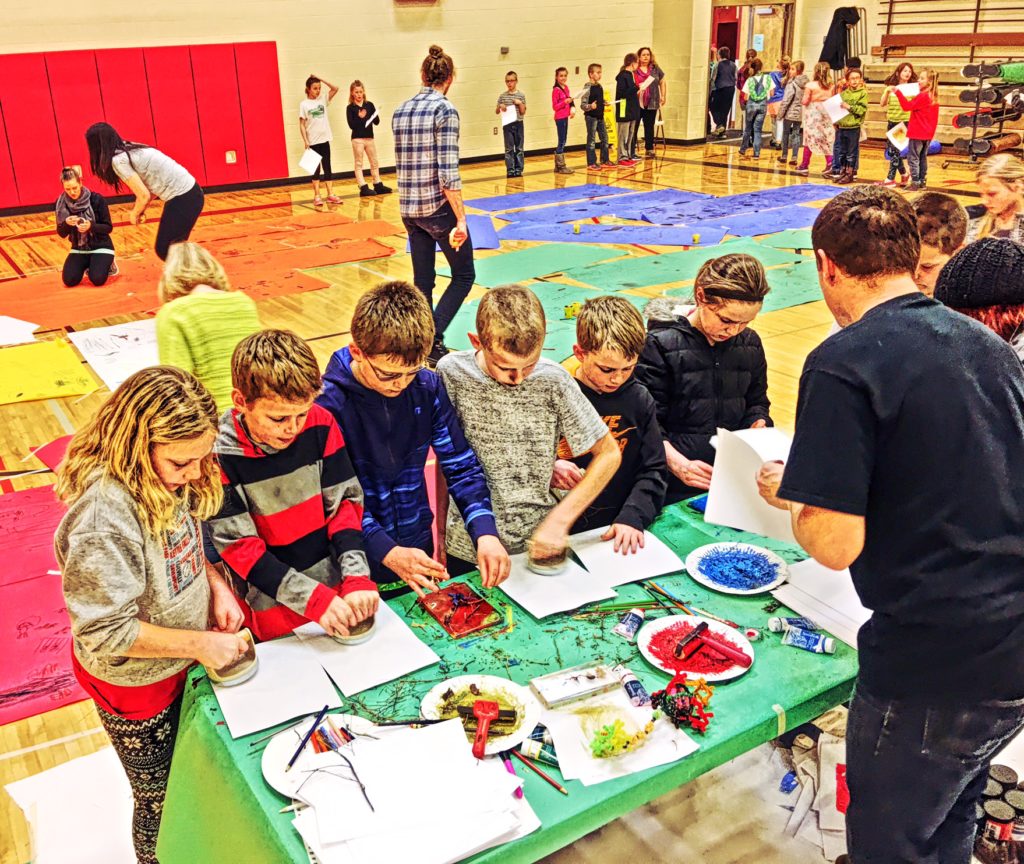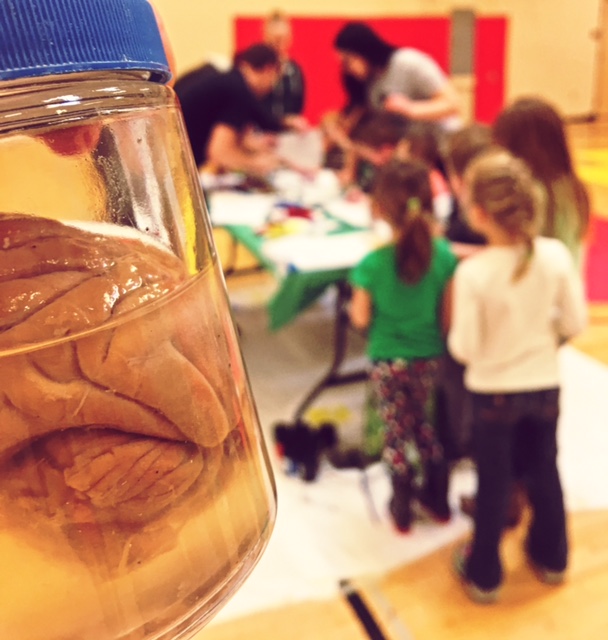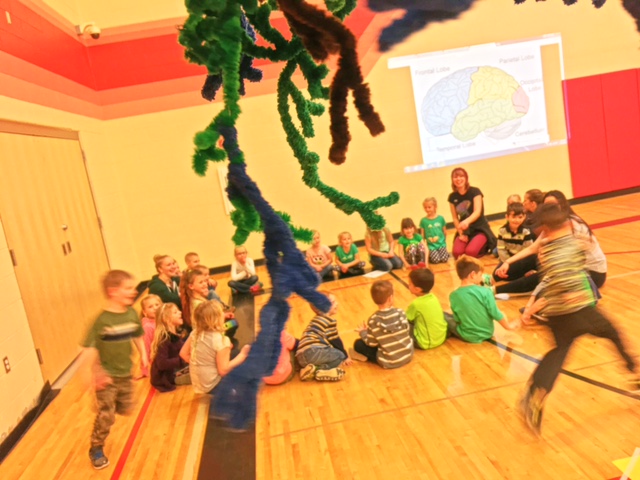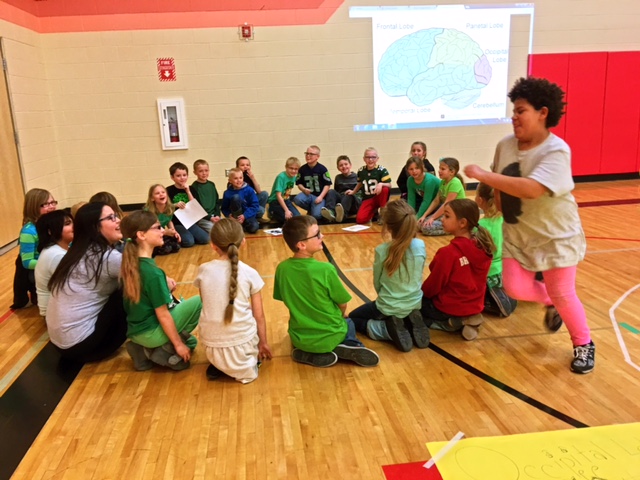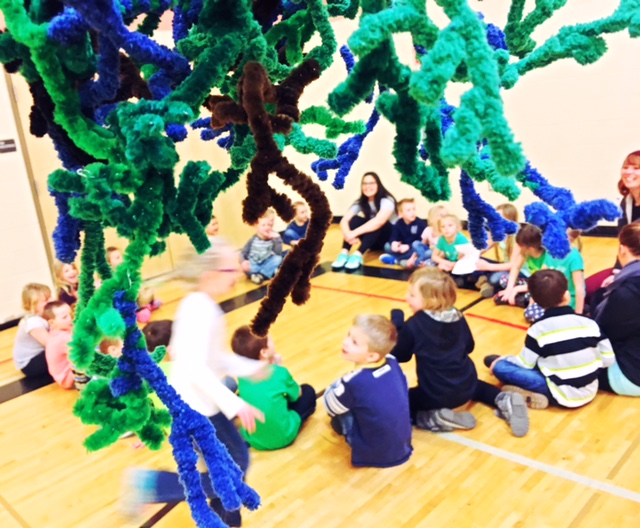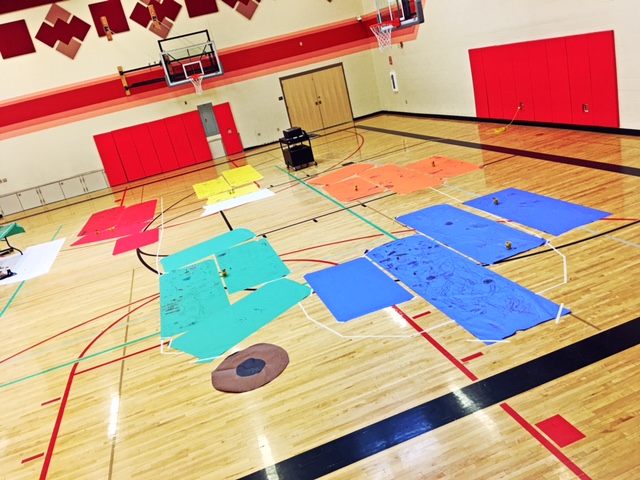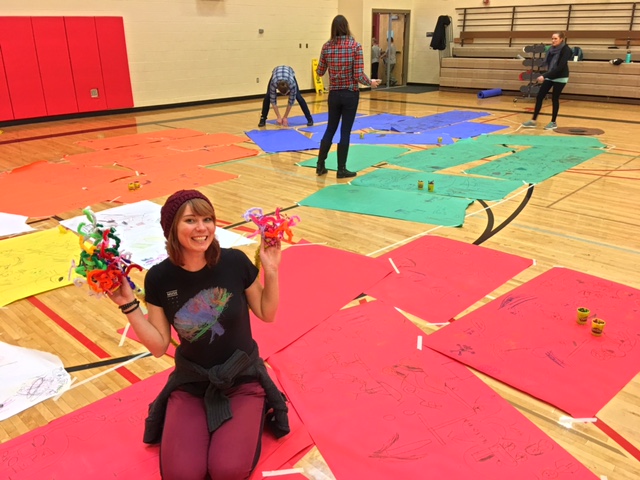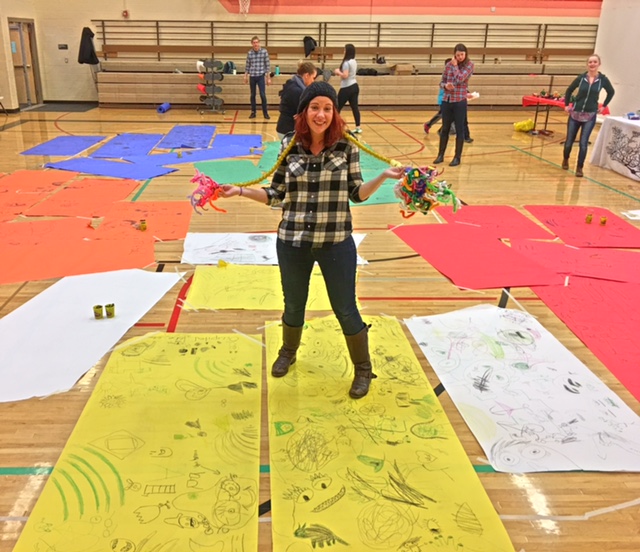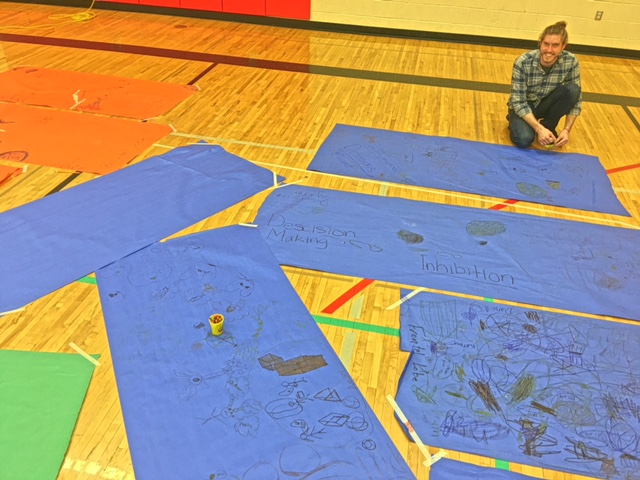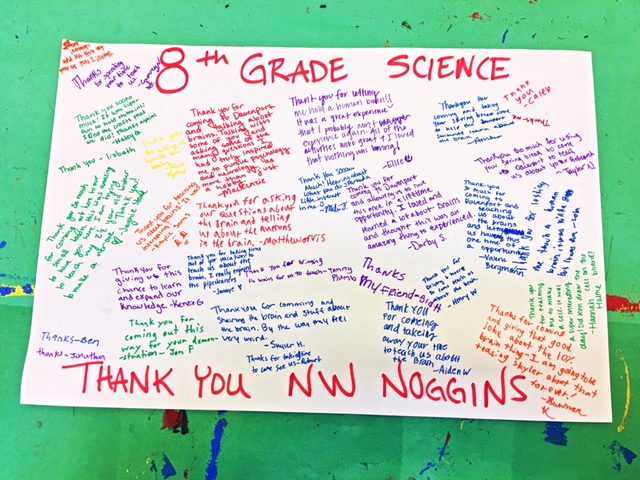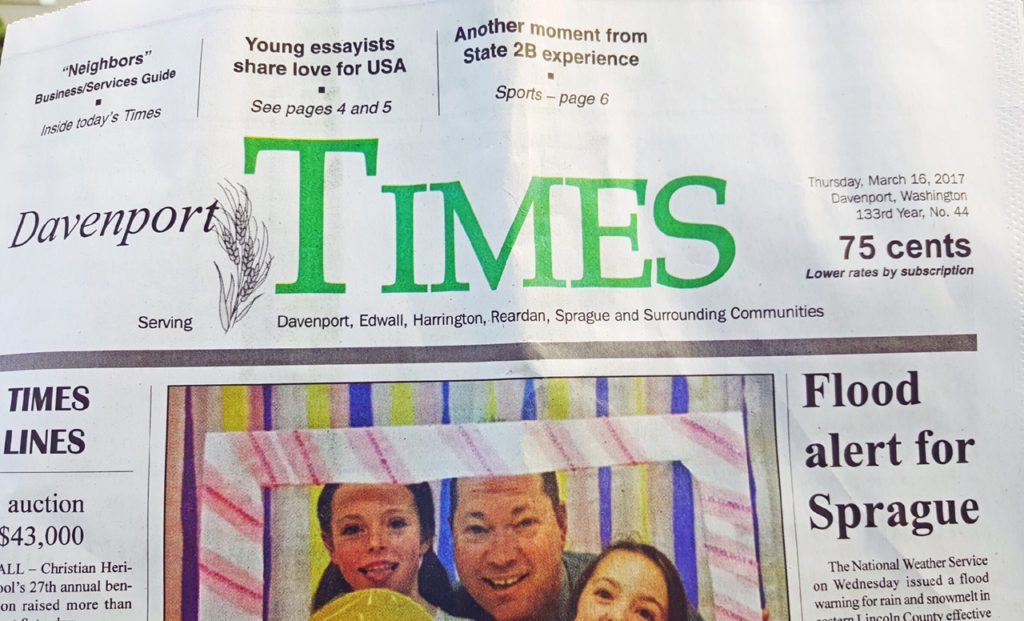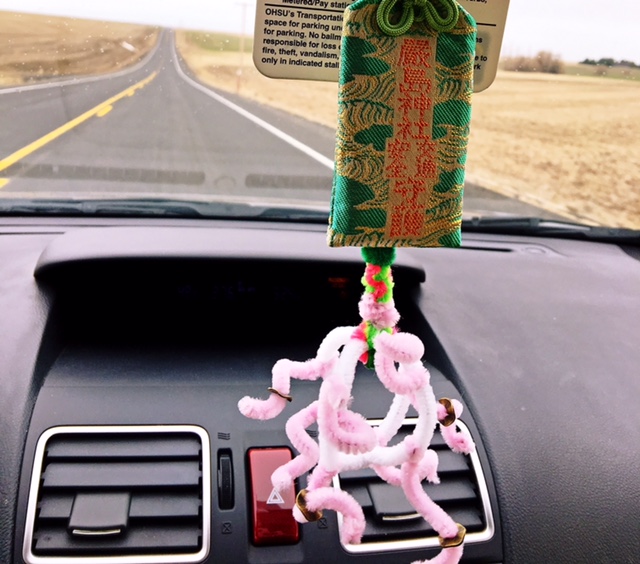What better way to spend Brain Awareness Week than by hitting the open road! We loaded up our cars with Noggin volunteers, pipe cleaners, dissection trays and extra human brains for a dramatic, stormy 700 mile roundtrip Pacific Northwest journey between Portland/Vancouver and Davenport, Washington..!
“Brains in the trunk!” Exploring unfamiliar neighborhoods, towns and regions is not only an enjoyable opportunity to make friends and learn from experience, but may also promote neurogenesis (the growth of new neurons) in parts of the hippocampus, a brain area in the temporal lobe critical for memory.
So this trip was good for all of us!
LEARN MORE: Mechanisms and Functional Implications of Adult Neurogenesis
We fueled up at a Northwest favorite, Burgerville, in The Dalles, Oregon…
…and arrived in Davenport after sunset…
We were extremely grateful for the coffee provided by science teacher Kim Hansen from Davenport Middle School at Some Like it Hot! Expresso the next morning!
LEARN MORE: NIH study finds that coffee drinkers have lower risk of death
This was an exciting, memorable trip – we were the “brain people,” recognized at Safeway, coffee shops, and restaurants in town! We brought a crowd of volunteers to eastern Washington, including Angela Gonzalez, an undergraduate in Neuroscience at WSU Vancouver who grew up in Davenport and had contacted Kim, her younger sister’s science teacher, to help arrange a visit..!
LEARN MORE: Kim Hansen on NW Noggin
The Associated Students of WSU Vancouver funded Angela’s return, along with her fellow WSUV undergraduates Kim Engeln and Christina Williams. They were joined by Rebecca Hood and Scott Jones, graduate students supported by Behavioral Neuroscience at OHSU, and undergraduates Jacob Schoen, Joella Deal and Allie Clark from Psychology at Portland State University…
We arrived in Kim’s classroom at Davenport Middle School early, set up tables with brains and art, and began with introductions..!
We find it’s often powerful to let young people hear about all the educational and career options out there, and the diverse and interesting people who pursue them, and how they too might consider becoming researchers on the brain and behavior, or artists – or both – themselves!
We discussed compelling federally funded investigations underway in Northwest labs on the brain and drugs, including alcohol, cocaine, cannabinoids and opioids, and also research on anxiety, depression, Parkinson’s disease, Alzheimer’s, fish cannibalism (and the genetics of parenting behavior), mathematical modeling of brain activity, adolescent brain development and other topics…
Students had prepared many questions before our arrival, and we delved into fascinating and diverse subjects, although several revolved around detectable themes…
Why, for example, were cigarettes still sold to 18 years olds in Washington and Oregon, when research identifies nicotine as one of the most addictive substances? Why is alcohol legal at 21, when significant brain development is continuing into your mid-20’s? What about medical marijuana, and why were opioids being over-prescribed?
LEARN MORE: Nicotine and the adolescent brain
LEARN MORE: A Molecular Basis for Nicotine as a Gateway Drug
LEARN MORE: Minimum Ages of Legal Access for Tobacco in the United States From 1863 to 2015
LEARN MORE: Public Health Implications of Raising the Minimum Age of Legal Access to Tobacco Products
Students were very curious about the apparent disconnect between research and public policy, and we asked how additional factors, including lobbying by tobacco companies, and pharmaceutical interests selling opioids, might also play a role (there are, we noted, tobacco leaves carved into the columns of the U.S. Capitol building). But the conversations were nuanced…
LEARN MORE: Drugmakers fought state opioid limits amid crisis
We explained, for example, how moderate alcohol drinking, while clearly dangerous for developing adolescent brains, was in fact associated with a reduced risk of mortality (fewer deaths!) in adults.
LEARN MORE: What’s a “drink..?” At the Newmark for beer & brains
LEARN MORE: The Influence of Substance Use on Adolescent Brain Development
LEARN MORE: Moderate alcohol consumption and the risk of mortality
Students also had questions about concussions and other head injuries, and what exactly happens when the brain is subjected to trauma. We explained how a hard hit could reverberate through soft tissue, even yanking out the axon (white matter) connections between distributed brain regions that are developing in adolescents, and need to coordinate activity in order for us to effectively attend, remember, plan and engage…
LEARN MORE: Traumatic Brain Injury: Hope Through Research
LEARN MORE: Protecting Noggins @ the Newmark
These questions were terrific, and included: How does your brain integrate all of the inputs when you are driving? Do memories add weight to your brain? How many different parts of the brain are there? Does the brain have chambers like the heart? What is used to preserve the brains? What is the impact of Mt. Dew (or any sugary drink) on your brain? Does a larger brain make you “smarter”? Where do the brains you have come from? Why are some people color blind? Why do YOU think brains are so interesting?
From PSU Noggin volunteer Allie Clark: “The students asked great questions, ranging from an entertaining “how many calories are in a human brain” (in case you’re wondering, it’s roughly 1942) to an insightful “how do we know that research done in mice applies to humans?” Their curiosity was very impressive, and it led to some of my favorite one-on-one conversations I’ve had while teaching with Noggin.”
We were joined for half the day at Davenport by Jessie Laughery, the Manager for Constituent & Community Relations for Representative Cathy McMorris-Rogers, Republican co-Chair of the House Neuroscience caucus. Both her office and that of Representative Earl Blumenauer, the Democratic co-Chair, had invited our Noggin volunteers to present a briefing in Congress last spring…
LEARN MORE: A Capitol Day: Brains in the House – and Senate!
Jessie wrote afterwards that “this week the Congresswoman co-led H.Res. 204, declaring support for Brain Awareness Week, with fellow Co-Chair of the Neuroscience Caucus Rep. Blumenauer. It was great timing for your stop in E.WA!” She added: “A sincere thanks for inviting me to spend time with your group in Davenport! NW Noggin is meeting a very unique but important need in communities across the PNW (and country) which we are very grateful for.”
LEARN MORE: MCMORRIS RODGERS, BLUMENAUER INTRODUCE BIPARTISAN RESOLUTION RECOGNIZING NATIONAL BRAIN AWARENESS WEEK
LEARN MORE: MURPHY, BLUMENAUER PUSH FOR FULL FUNDING OF BRAIN RESEARCH
Then it was time, in class after class, for brains and art!
We broke down into smaller groups, and had many productive conversations while making brain cells out of pipe cleaners, and using mosses, twigs and leaves to press out stunning gel prints of neuron forms…
MAKE YOUR OWN: Neuron Gelatin Prints (pdf)
MAKE YOUR OWN: Neuron Gelatin Prints (doc; with working web links)
After a full day of questions, we enjoyed a fantastic dinner at the Tribune Smokehouse and happily collapsed until Friday morning. That wonderful coffee, courtesy of Kim, was welcomed again as we headed to Davenport Elementary School for six 45 minutes classes with every K-5 student in town!
We spent a full day in the Davenport school gym, and taped an outline of a giant brain beneath the basketball hoops, with sheets of colored butcher paper to indicate frontal (blue), parietal (orange), occipital (yellow) and temporal (green) lobes, plus the cerebellum (in red)…
We divided each class into five brain area-specific groups, and spent time discussing the various roles of their regions, asking them to consider how they might draw what each did…
The frontal lobes, for example, are important for social decision making, and many kinds of movement, including dancing, jump rope and speech…
Different brain areas do different things, and collaborate through long range connections. As you grow, these networks of linked regions get better at working together. We had kindergartners calling out “my parietal lobes tell me where my body is” and “my temporal lobes let me recognize what I see!”
LEARN MORE: Functional brain networks develop from a “local to distributed” organization
We met some excellent artists in this school..!
Kids also held real brains, asked great questions, and made more colorful gel block neuron prints..!
“We want to study brains!!” said these neuron heads
We also played many “Brain, brain – LOBE!” games – with students calling out a specific brain lobe they’d learned about when choosing the next student to run and chase them..!
By the end of the day the kids had created a pretty extraordinary illustrated brain…
…and learned a lot about their own nervous systems!
Many thanks to the welcoming teachers and staff at Davenport Elementary and Middle School (particularly Kim Hansen and Davenport Elementary principal Courtney Strozyk for organizing our visits, preparing supplies – and coffee!) for one terrific stay in in the home of the Gorillas!
We hope to return to eastern Washington again soon…
From the Davenport Times!
Home to Portland…






